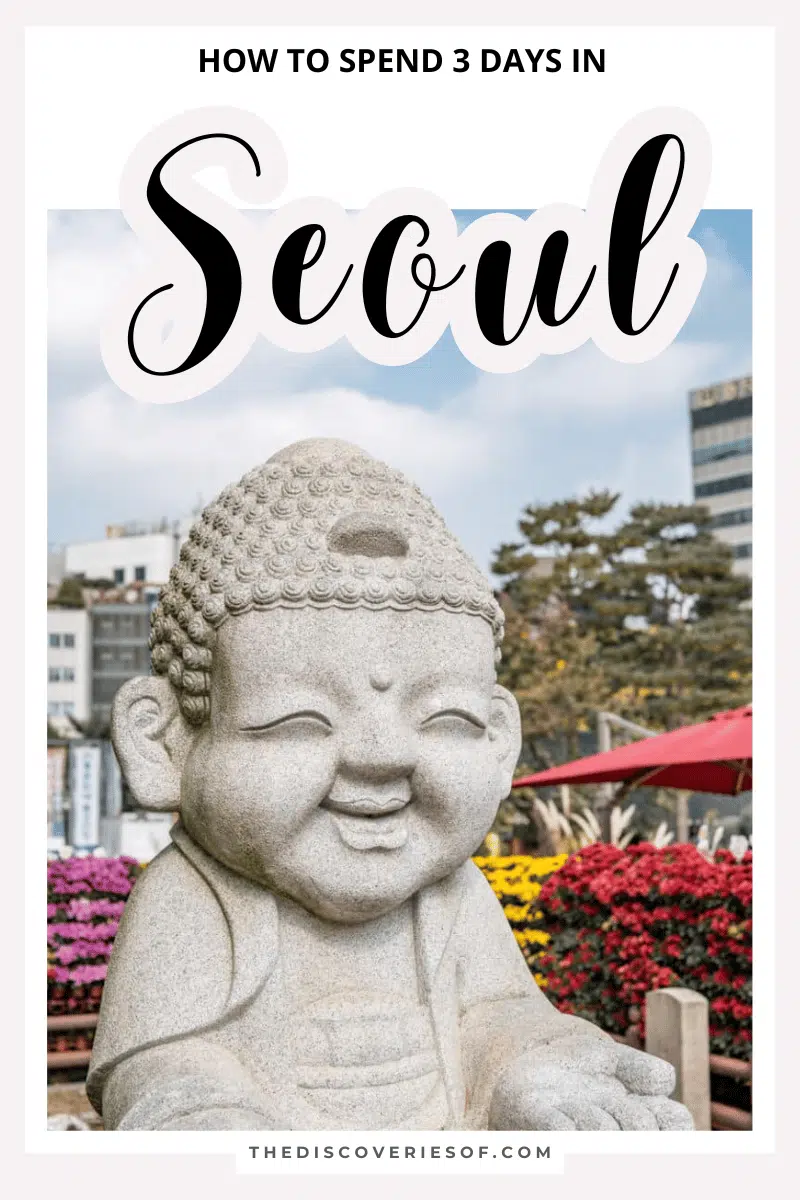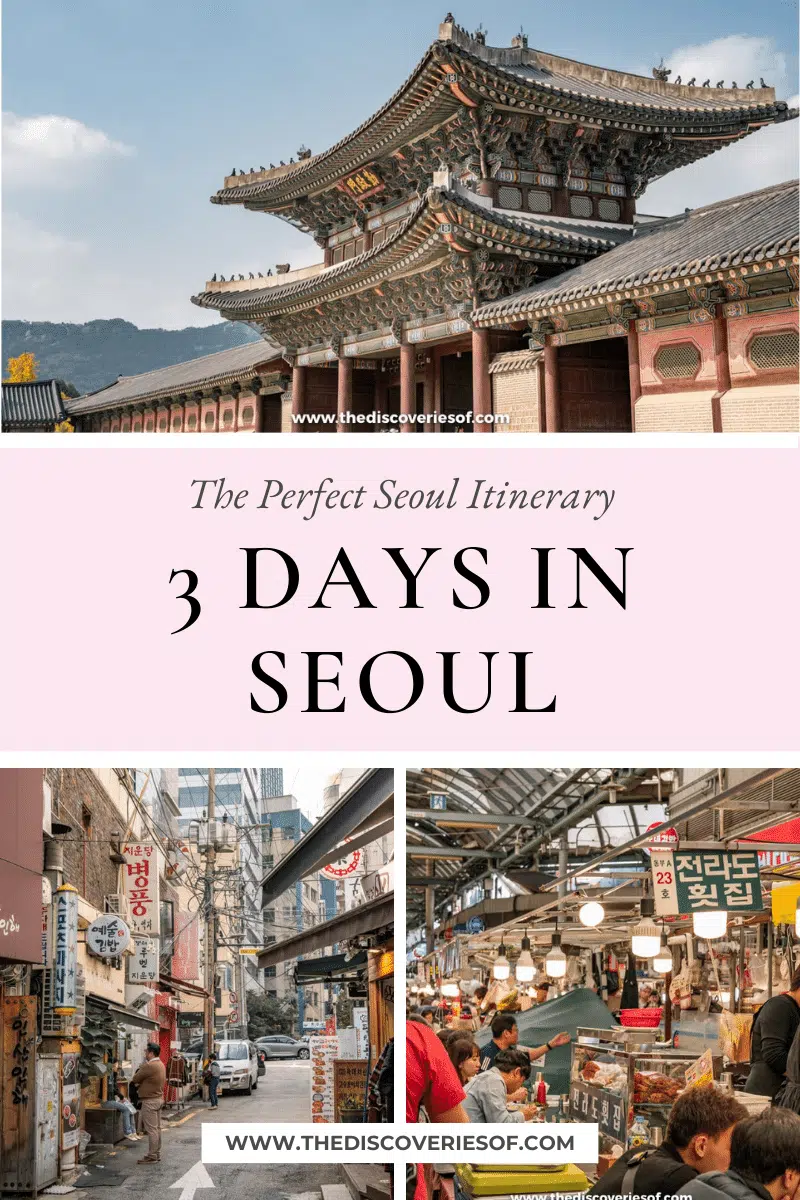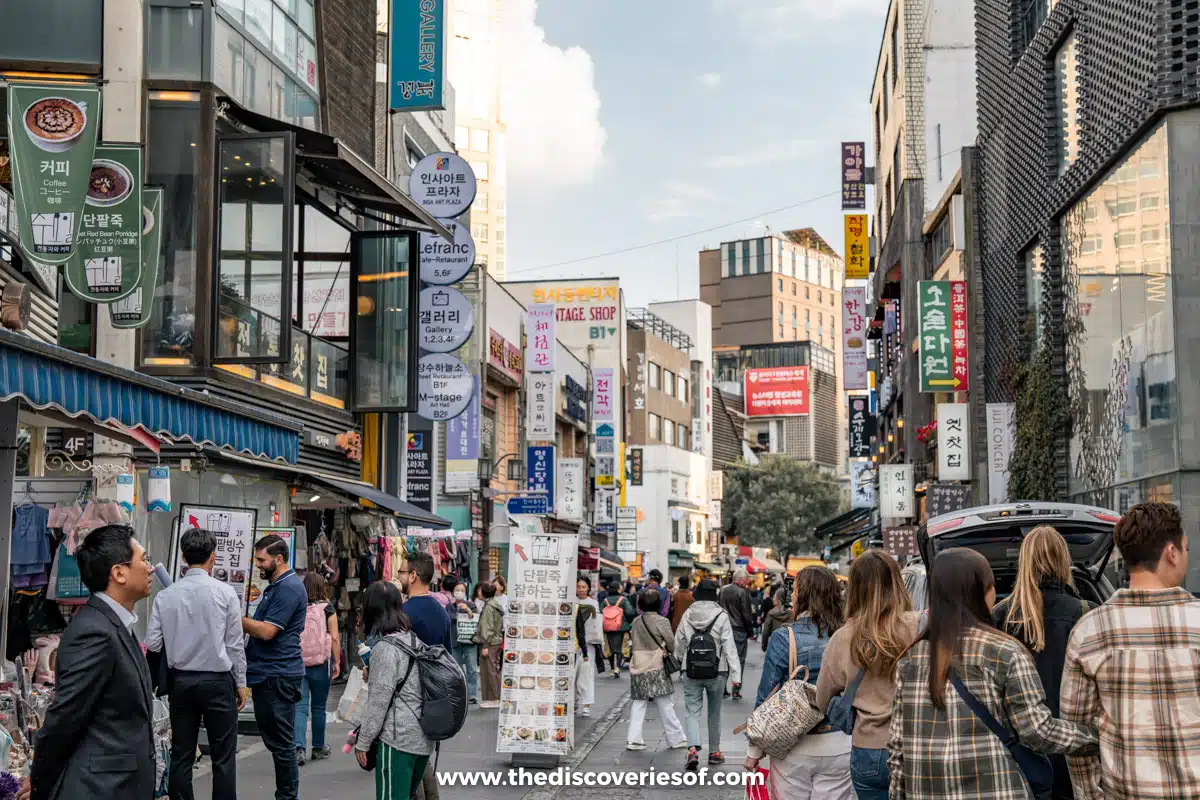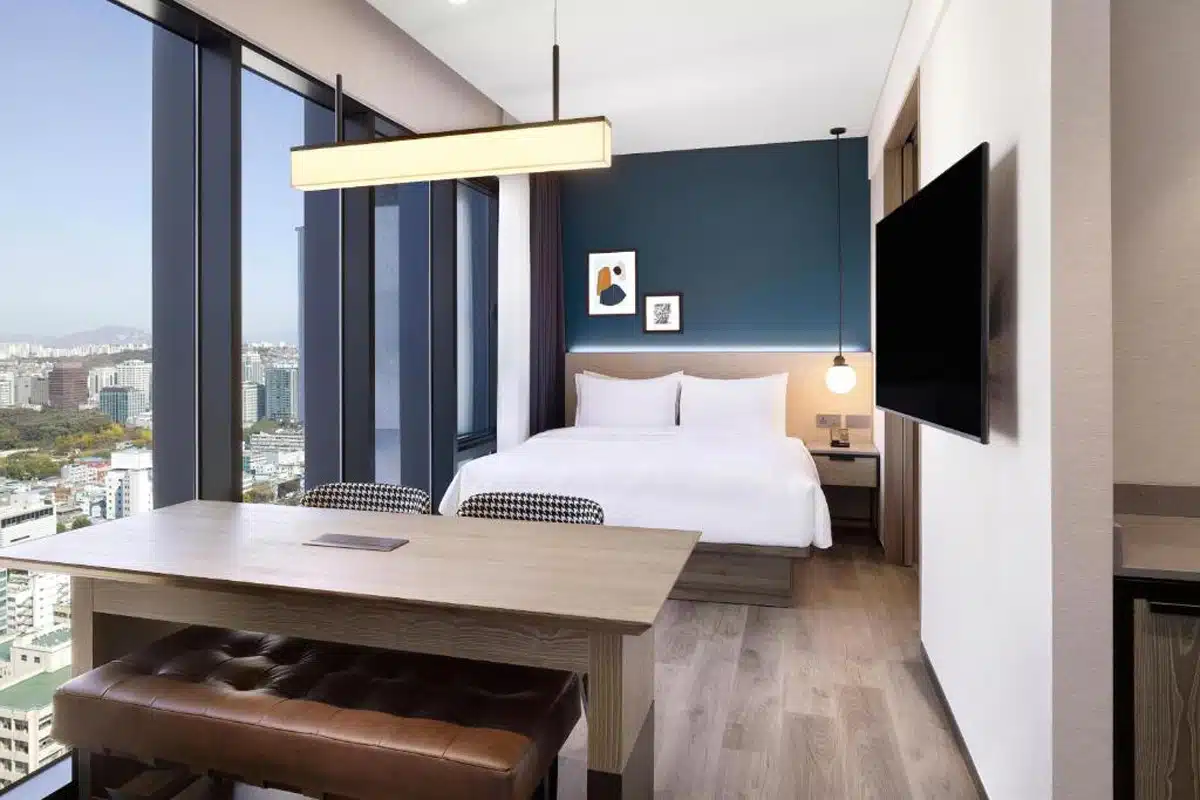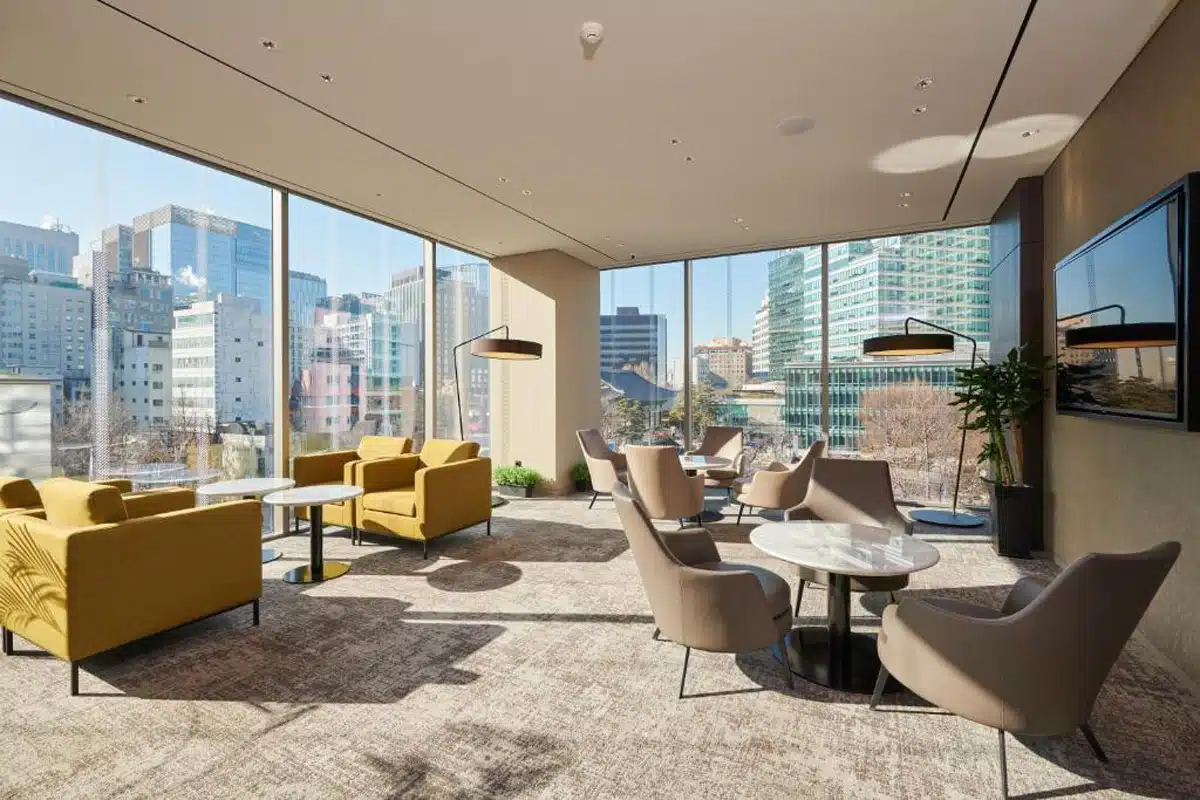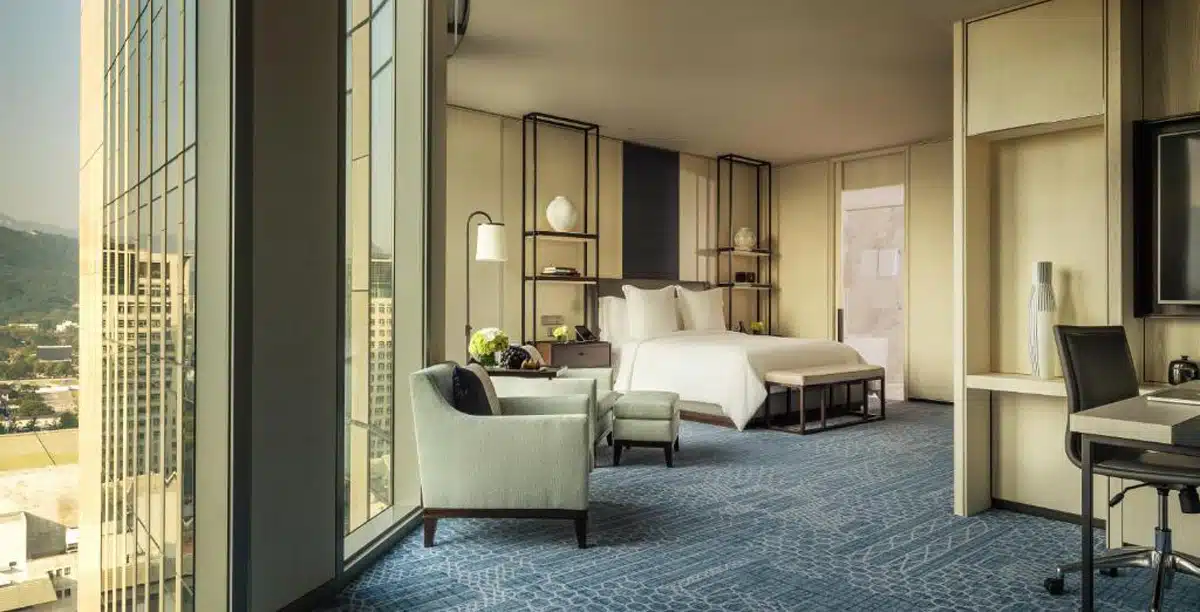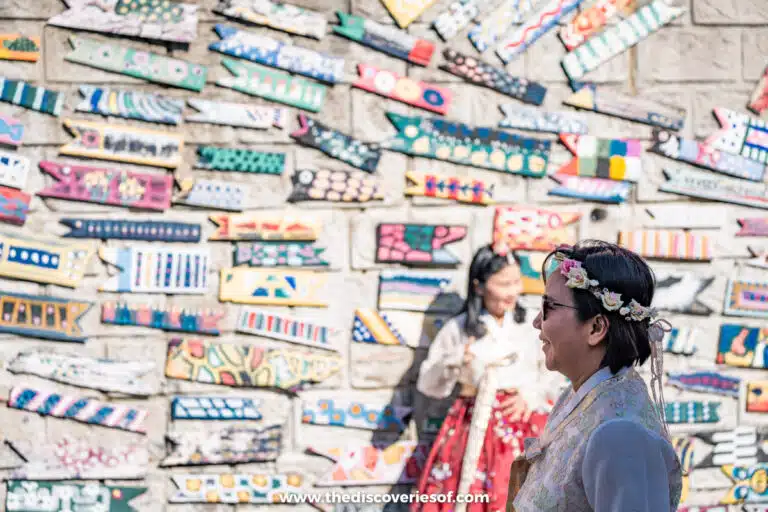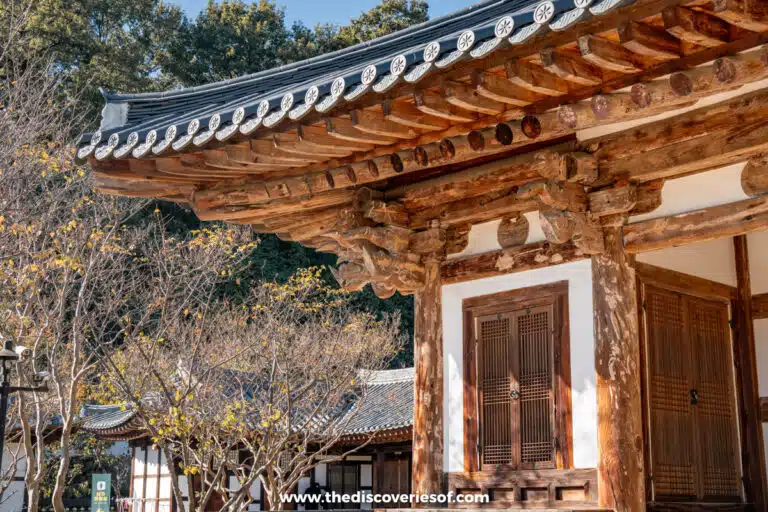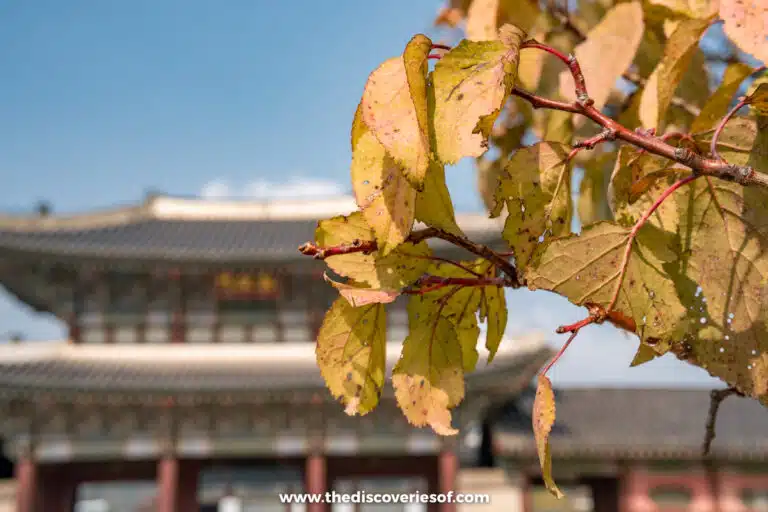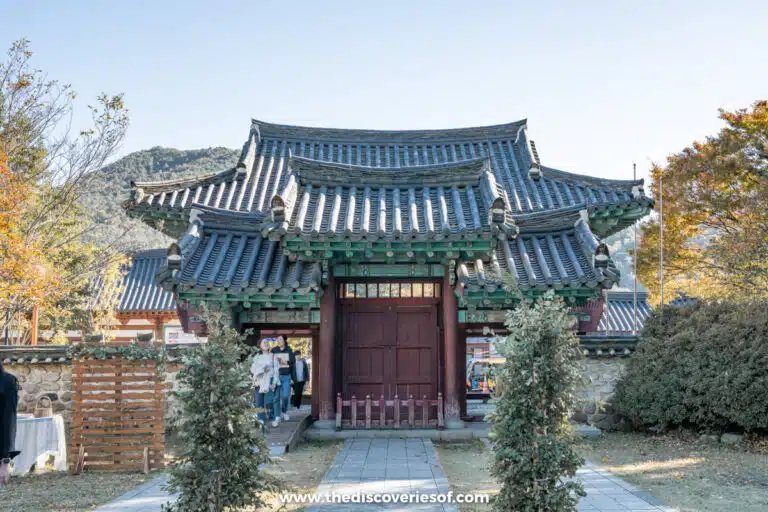Seeing everything that Seoul, South Korea’s sprawling capital offers in a few days is no easy task. But this Seoul itinerary packs in Joseon Dynasty palaces, all-you-can-eat BBQ feasts and pop culture staples in just 3 days. Let’s adventure!
I just got back from an action-packed trip to South Korea, and (no surprise) Seoul was a massive highlight reel.
To say that I was moving non-stop from morning to night may give you an idea of how much there is to see and do in Seoul. So, when I wrote this itinerary, I made sure to make it as efficient as possible to help you make the most out of your trip.
We’re going to explore where to get the best street food, see the city’s stunning palaces, fit in a day trip to the DMZ and soak up a (hopefully) glorious sunrise on an urban hike.
That’s all before seeing the idyllic hanok houses in Bukchon Village, and scoring some of those K-beauty supplies you’ve been waiting to stock up on at bargain prices.
Long story short, you’re going to do a lot on this short trip and we’ve no time to waste. Here’s what you need to know for your 3 days in Seoul.
3 Days in Seoul Itinerary
Day 1: Explore Seoul Old and New
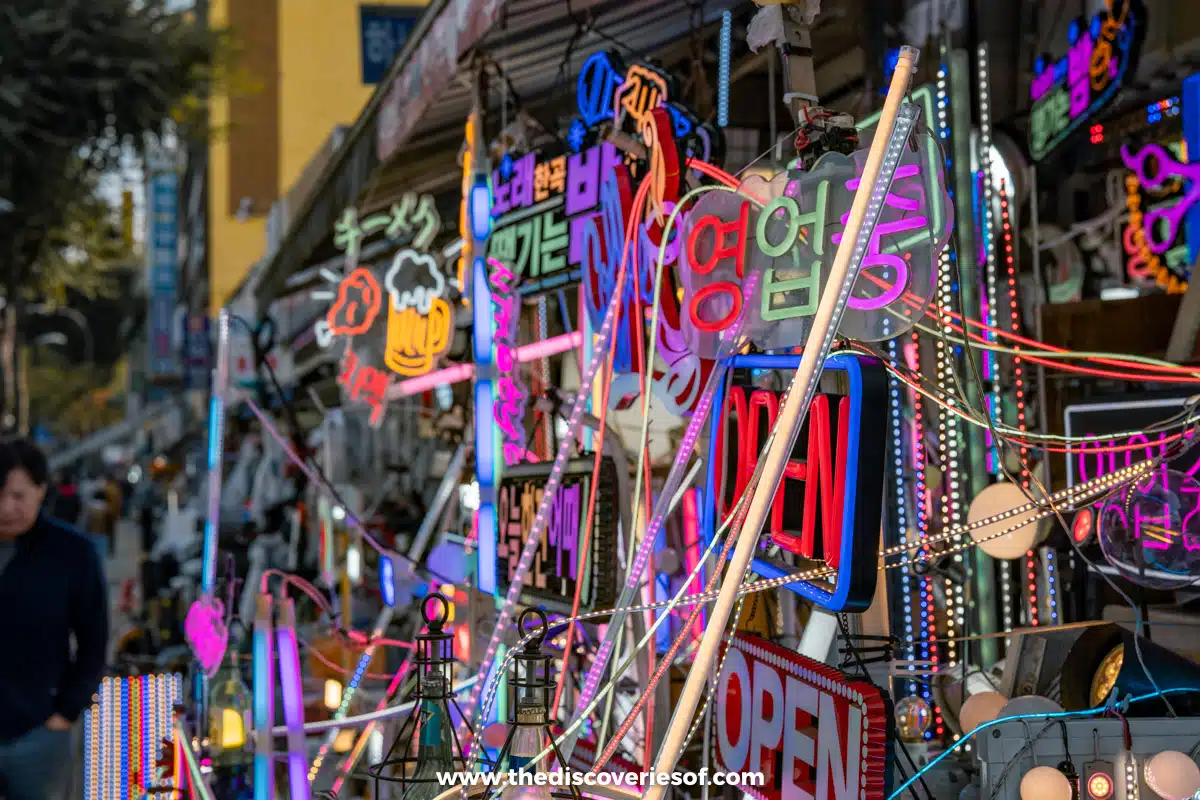
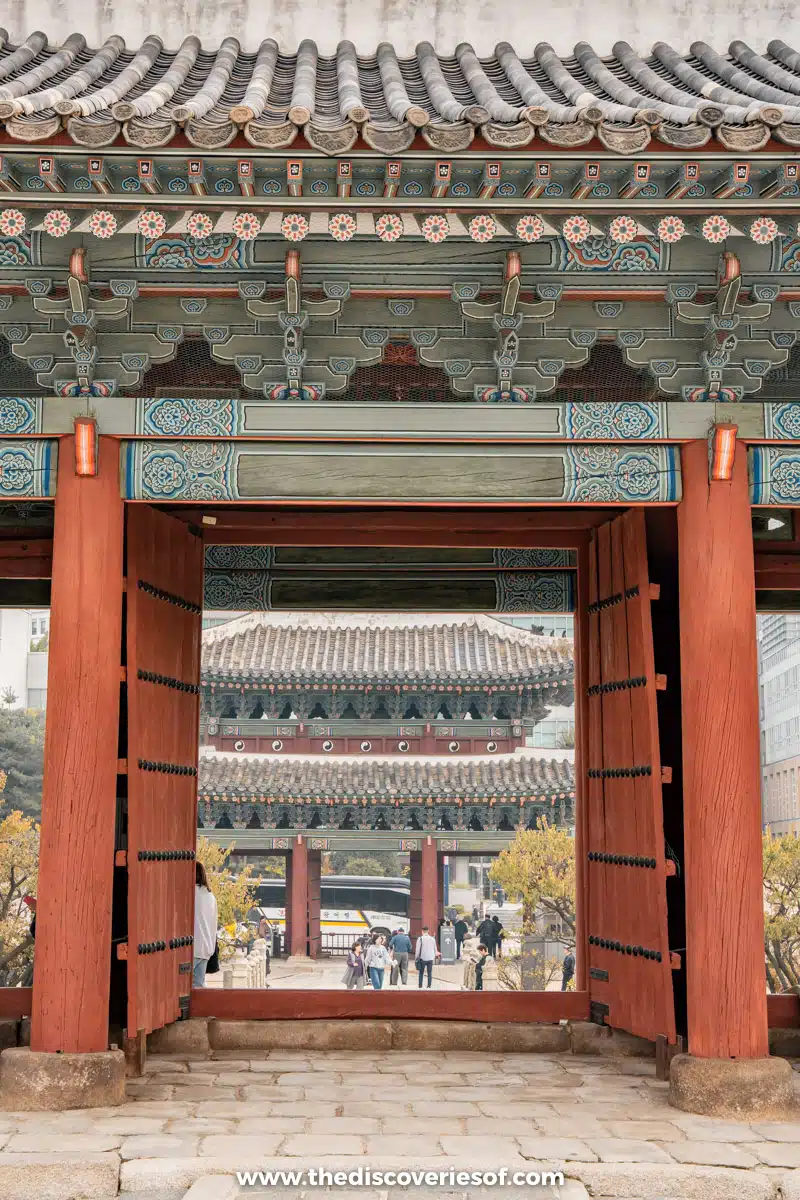
Welcome to Seoul. I’m guessing you haven’t slept off that jet lag entirely, but that’s ok. This city never stops moving, so you can get your day started no matter when you decide to roll out of bed.
I’ll warn you – we’re going to hit the ground running on your first day. We’ll explore historic landmarks like Namdaemun Gate (the 14th-century pagoda that was once the southern entrance to the city) and the bright neon lights from the top of N Seoul Tower and more. Wear comfortable walking shoes and have a hearty breakfast.
Walk Around Gwanghwamun Square
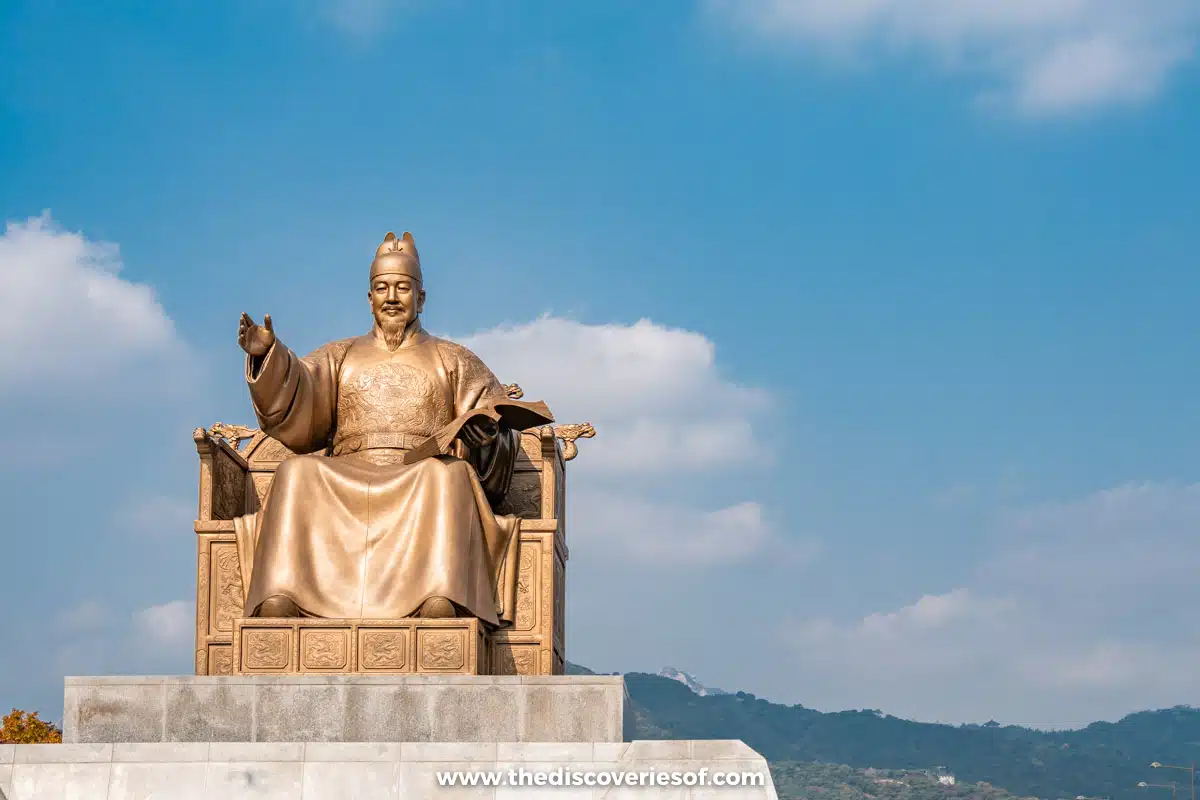
There’s no better place to kick off your time in Seoul than seeing Gwanghwamun Square, the meeting place of old and new Seoul in the city’s centre.
Once known as Hanyang, Seoul has over 500 years of history under Joseon rule, and you’ll notice plenty of tributes to that history dotted around this massive 555 x 34-metre (1,820 x 112-foot) town square.
The most important (and prominent) figures are a statue of Sejong the Great (a Joseon ruler who legit invented the Korean alphabet) and the famed Yi Sun-sin, who helped defend Korea during the Imjin War.
The square itself is where many of the administrative buildings were from the past to present, and is now an important gathering place for locals and tourists downtown.
It’s also a mere few paces away from our next stop, the stunning Gyeongbokgung Palace.
Tour Gyeongbokgung Palace
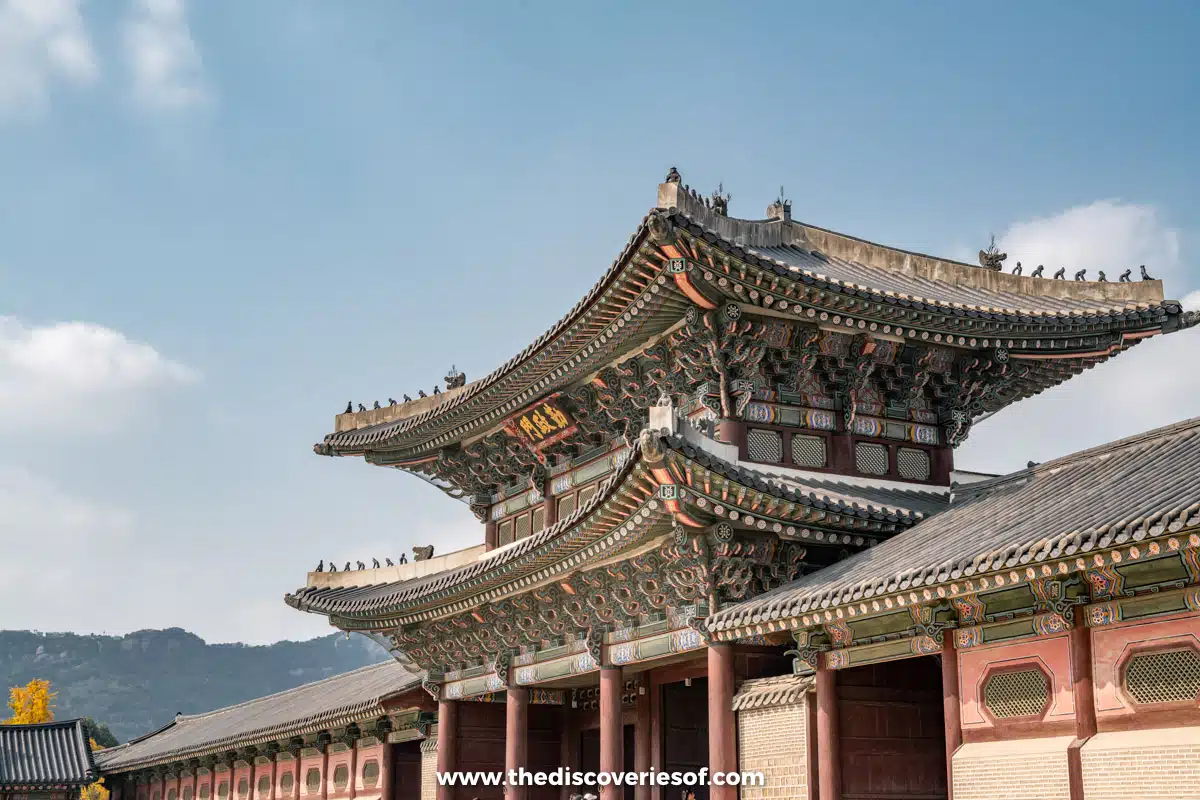
Seoul has always been the focal point for power in South Korea, which explains why by the early days of the Joseon Dynasty, the city boasted not one, not two, but five Grand Palaces and, you guessed it, Gyeongbokgung Palace was one of them.
The late 14th-century palace is one of the most important reminders of Joseon Dynasty rule in South Korea. It still stands despite years of remaining dormant after it was burned to the ground during the Imjin War in the late 1500s and destroyed again during the Japanese occupation, where nearly all of its buildings were levelled to the ground.
But during the 1990s, South Korea began rebuilding this iconic palace, and you can once again gaze in awe at the massive gate of Gwanghwamun at the entrance, with its pagoda architecture.
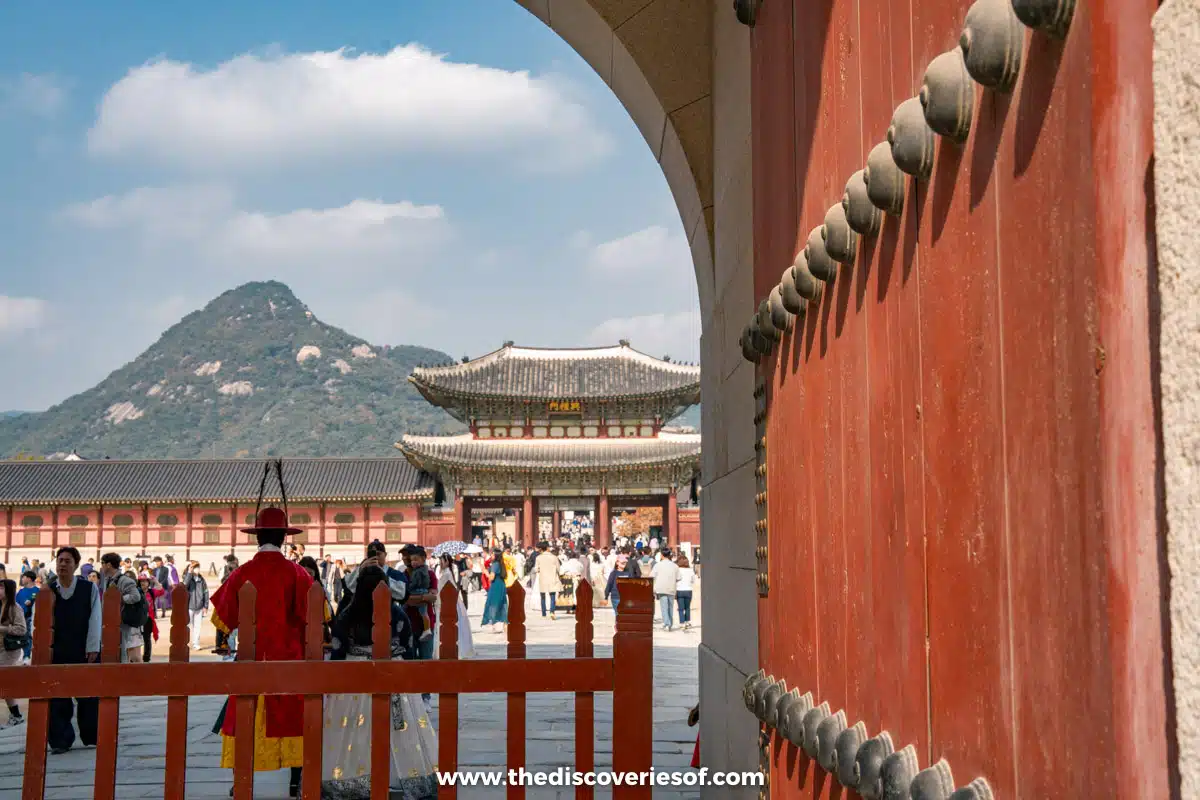
Also make time for the spectacular Heungbokjeon Hall with its gorgeous details carved from wood and stone – it was once an administrative building for the royal leaders.
Top Tip
If you have time to visit the National Palace Museum of Korea, you can check out an exhibit that shows the 30+ years of restoration at Gyeongbokgung Palace.
Lunch at Insadong Hangane Bulgogi Jumak
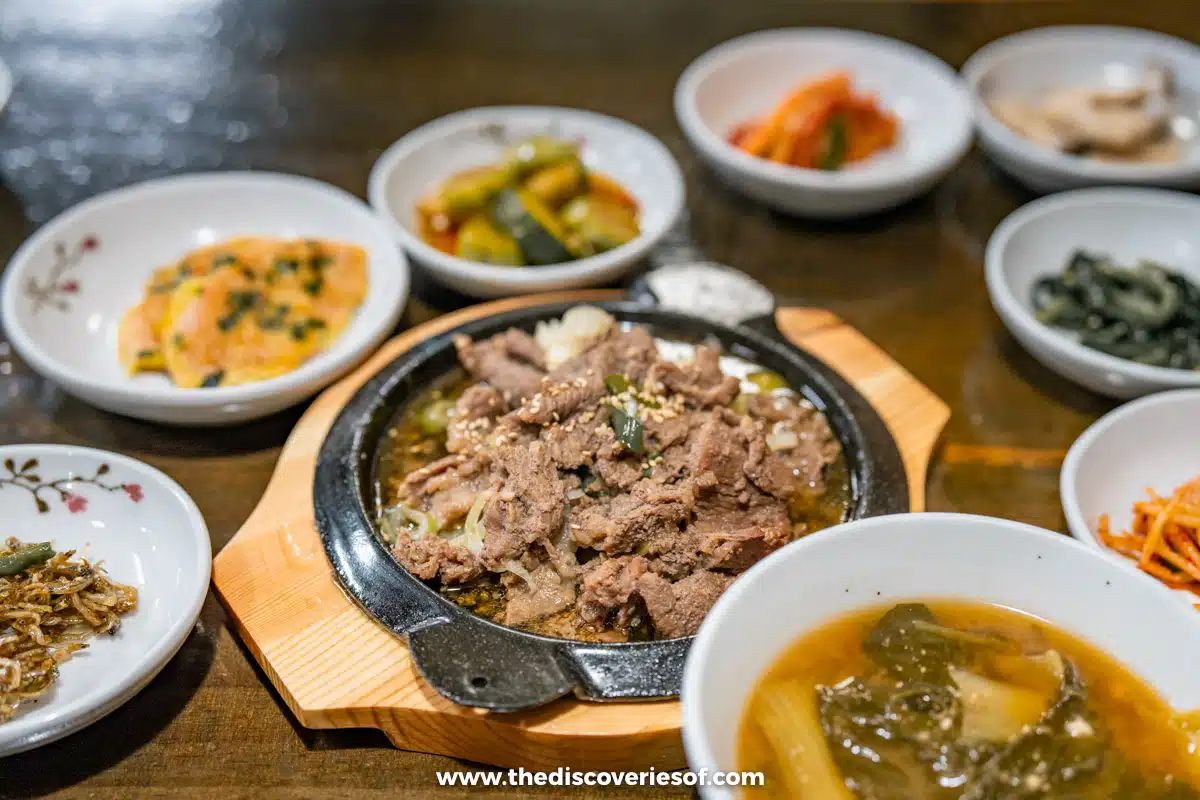
I imagine after a couple of in-depth history lessons, you’re ready for a lunch break. Luckily, you’re just a few blocks away from the ridiculously good Insadong Hangane Bulgogi Jumak.
It’s a ten-minute walk to land at this fantastic restaurant which really offers one of the best deals in Seoul.
For 18,000 Won (£11), I had a feast of stellar beef bulgogi, which included more banchan (complimentary tasty sides) than you’ll know what to do with.
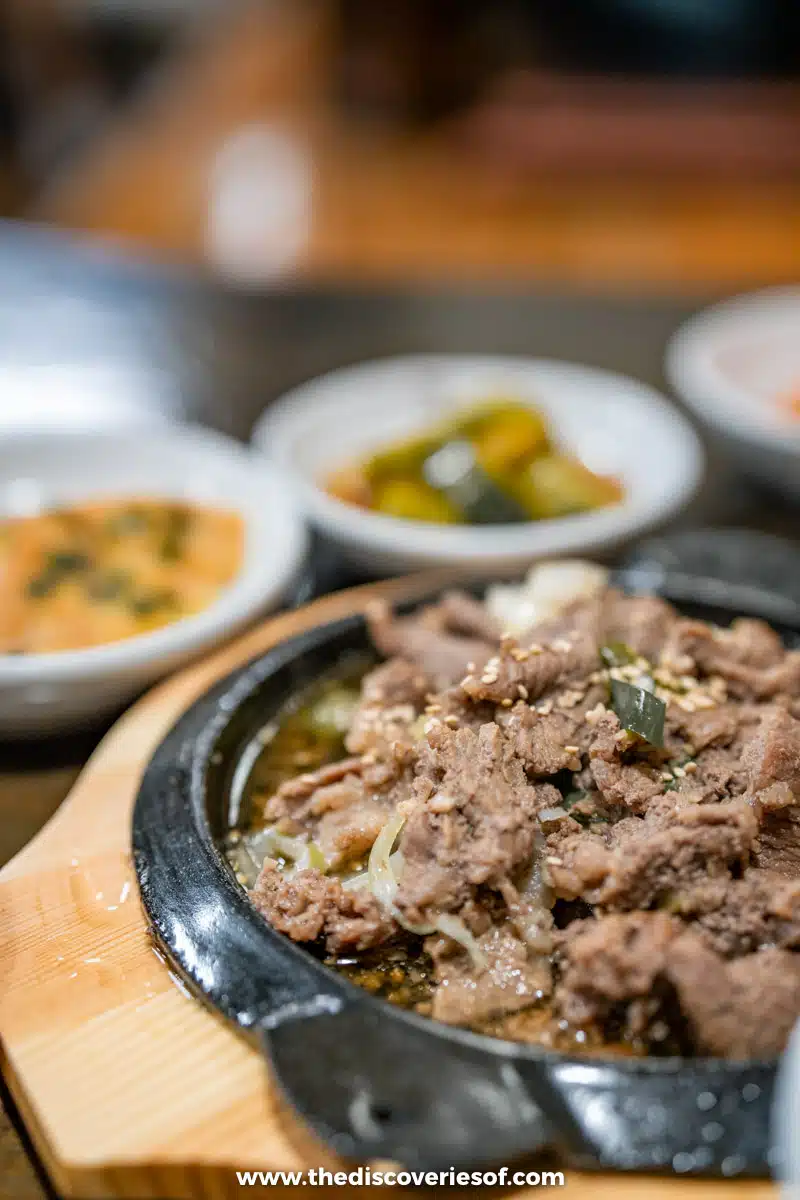
As I mentioned, the bulgogi was pretty epic, but the pickled veggies, rice, and soup were all worth saving some room for.
It does get busy, but it’s definitely worth the wait. You can also often make the wait shorter by nabbing a spot at one of the traditional tables on the raised deck in the corner of the restaurant where you eat off a low table whilst sitting on a mat on the floor.
Top Tip
This local favourite is closed on Saturday and Sunday, but the food (and view) at Nine Tree Premier Hotel Insadong are great too.
National Museum of Modern and Contemporary Art
South Korea has a rich history of art that spans thousands of years. From ancient calligraphists like Shin Saimdang to more recent abstract painters like Park Seo-bo, learning more about historical and contemporary art is a must.
The National Museum of Modern and Contemporary Art is where to go to learn more.
When it opened in 1969, it was the only place in Korea where you could see modern art from local and international artists and continues to deliver groundbreaking exhibits and events. Prime example? It was the first East Asian country to host collections from The Whitney and Albertina Museum.
You can see works from Warhol, Niki de Saint Phalle, and other popular international artists. But I’d focus on the local artwork since you’ll only have a couple of hours here.
From the legendary self-taught Park Su-geun, famous for his unique paintings of typical days in Korea in the mid-20th century, to a current exhibit highlighting decades of work from Korean Avant-Garde Association founder Kim Kulim – you’ll learn why Seoul is one of the most exciting cities in the world for art right now.
Top Tip
If you have time, walk over to see the collection of roses in Theme Garden (also in Grand Park) too.
Visit Jogyesa Temple
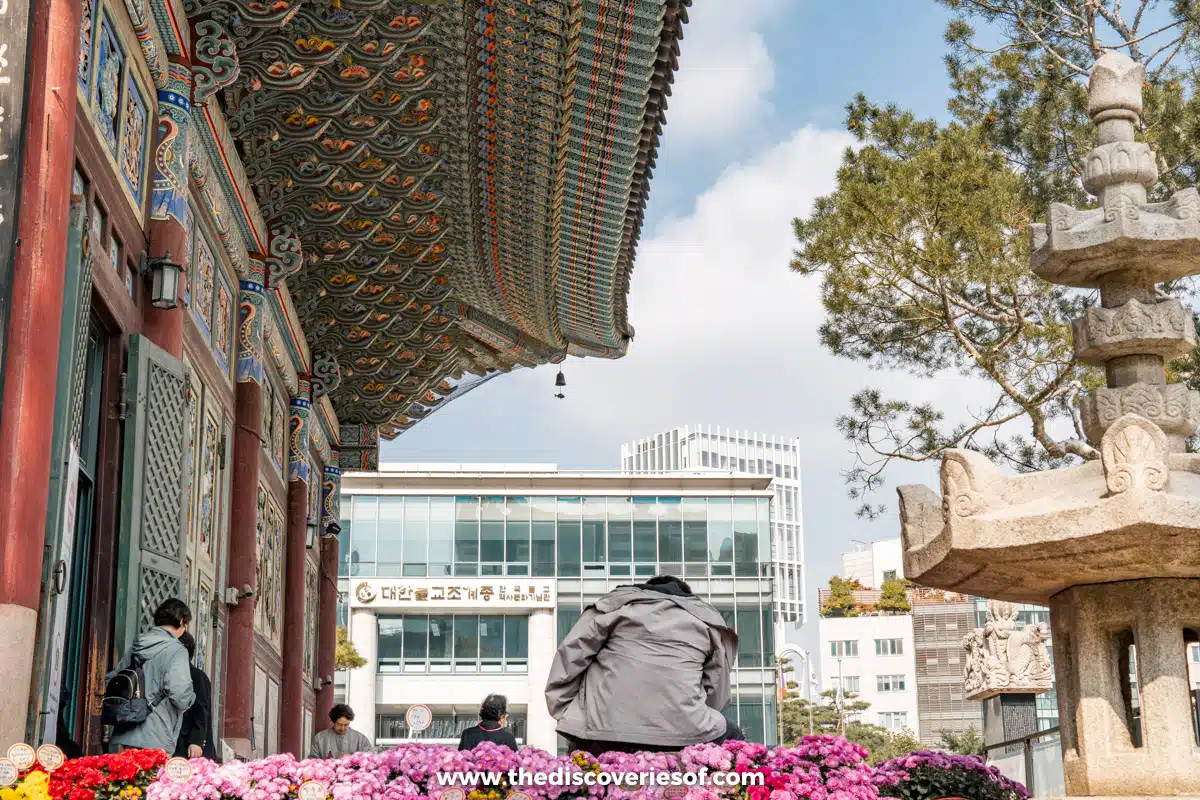
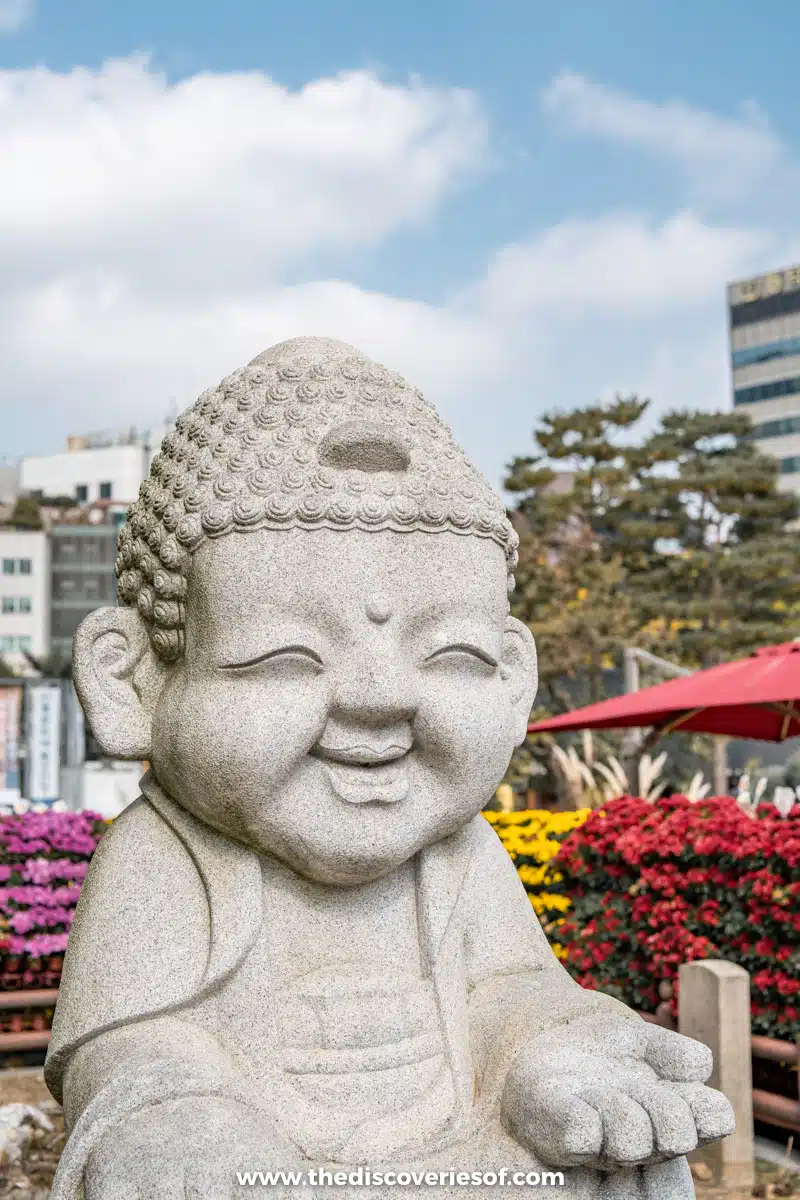
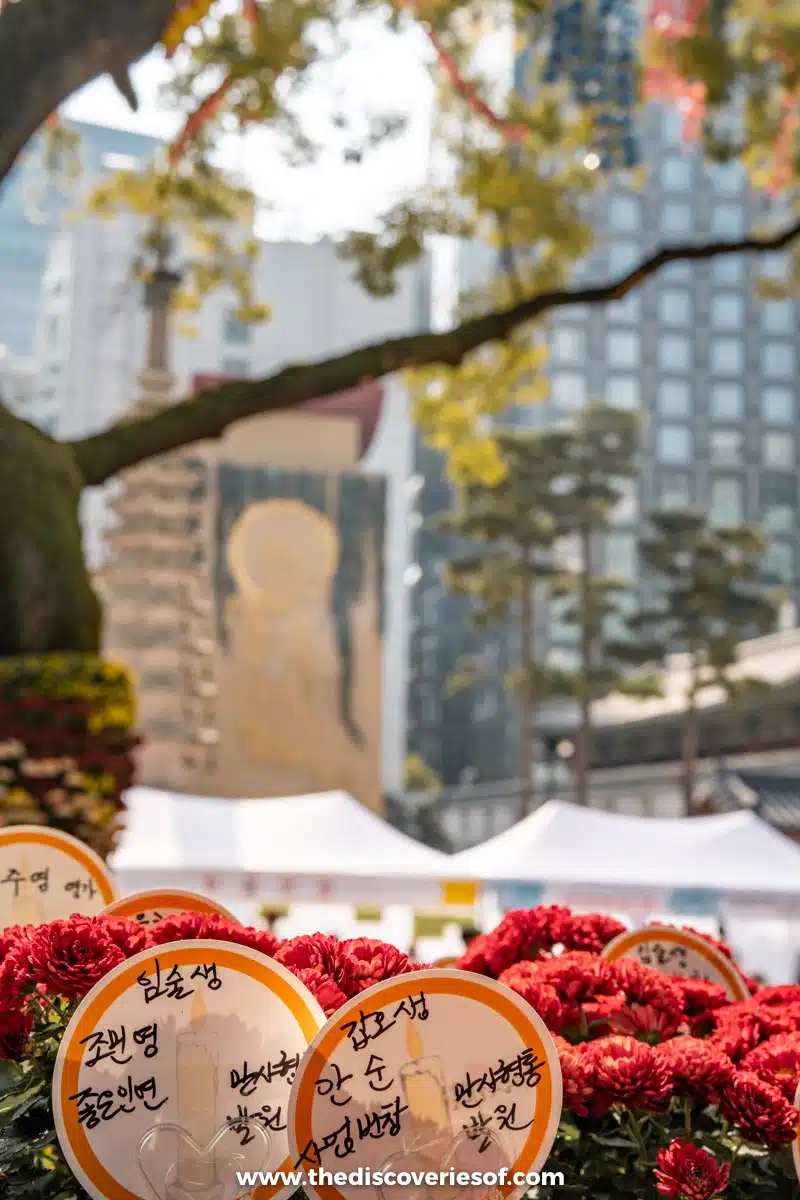
While Buddhism is not quite as prevalent in Korea as it is in China, many South Korean residents have practised the religion for centuries, and you can find some beautiful temples throughout the country.
Jogyesa Temple is a particularly stunning Buddhist temple, even if it is a bit younger than you might first guess. The beautiful, brightly coloured facade stands out as a symbol of old Korea amongst downtown Seoul’s office buildings and busy streets but is less than 100 years old.
It’s still an active temple, with prayer, community events, and lectures happening frequently in this tranquil setting in the bustling metropolis.
Top Tip
If you visit between March and June, you’ll see the lotus lantern decorations. A rainbow of colours lights up the outdoor area near the temple and is nothing short of spectacular.
Chill Out at Cheonggyecheon Stream
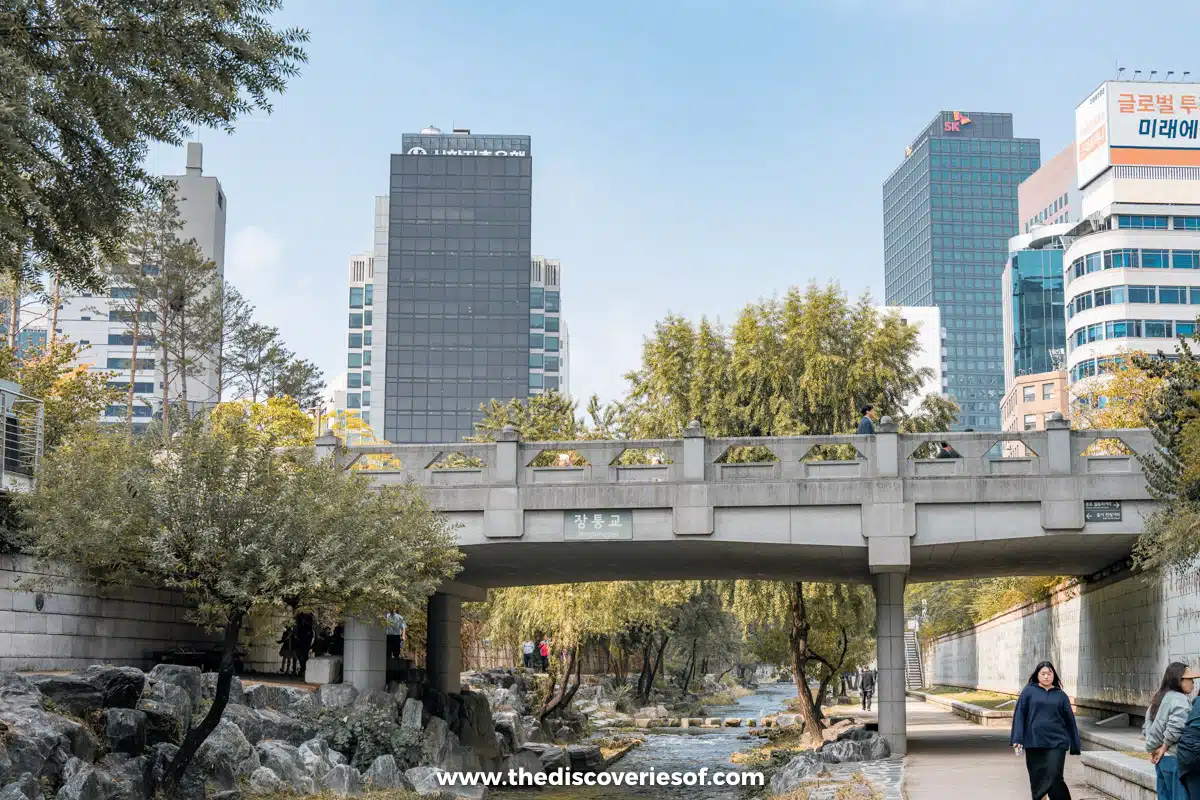
Now it’s time to have a little break like a local.
Walk over to a nearby section of the 10.9 km (6.7-mile) Cheonggyecheon Stream for a unique example of nature in an urban setting. The stream runs through the city from the nearby valleys of Inwangsan Mountain and is a great place to kill some time.
While the story hasn’t always been so rosy (it was part of the city’s sewage system for decades before being covered by a freeway), it’s once again a tranquil site flowing through the ancient city.
After a restoration project in the early 21st century, it’s now a popular urban park where locals hang out and relax near the water. There’s plenty to look at along the shores of the stream, with bridges, trees, and murals lining the long concrete banks.
As it runs through the city’s centre, it’s also a nice relaxed way to walk between different neighbourhoods including Insadong and Mugyo-Dong.
Top Tip
Art installations like the multi-coloured spiral horn are fun to look at year-round. But if you visit South Korea around Christmas, the decorations over the stream are really fun to see.
Check Out the Namdaemun Gate
Sungnyemun (also known as the Namdaemun Gate) is a beautiful Joseon-dynasty gate on the southern side of the city and was one of 8 gates in total.
The gorgeous Pagoda-style gate sits atop large stone steps and is a striking reminder of the Joseon-dynasty rule.
It was restored only a few years ago, but this fire was a bit different than many that destroyed Korean artefacts under Japanese occupation. It was actually an elderly Korean resident who committed arson and was responsible for destroying a large section of the elaborate building and roof. Tragic.
It took nearly 25 billion to complete the project, but you can see the iconic symbol how it was always intended to look when you visit the gate.
Eat and Drink in Itaewon
If you’re getting hungry again, I can’t blame you a bit. It’s been a full day. I have just the remedy for you, and it’s dinner and drinks in the vibrant Itaewon.
The multicultural neighbourhood is a popular destination for locals and tourists and a perfect place to find food and drinks worldwide.
Your options are endless, but I have a couple of suggestions. If you want traditional Korean food, Maple Tree House serves delicious Korean BBQ in a stylish room.
And if you’re in the mood for something different, head to Mikkeller Bar Seoul, where you can try craft beer and food at one of the famed Danish brewer’s South Korean outposts.
Take Namsan Cable Car Up to The N Seoul Tower and Visit the Observation Deck
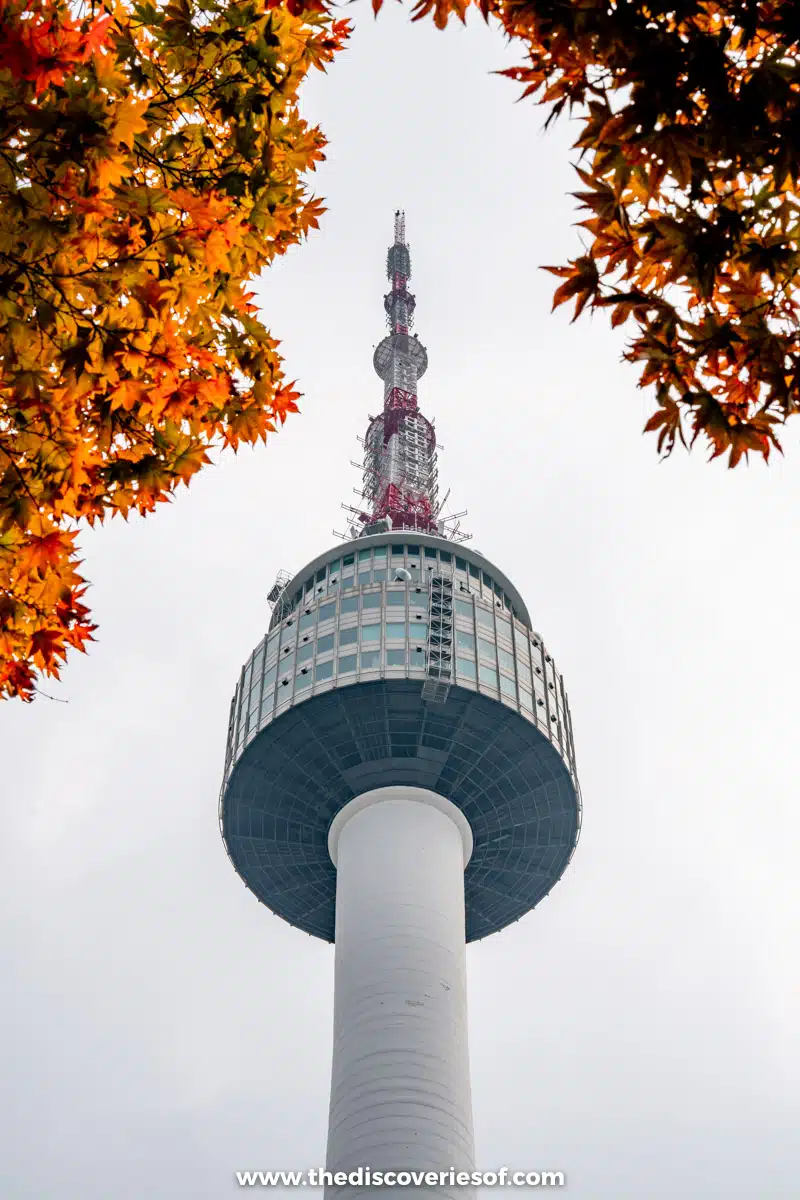
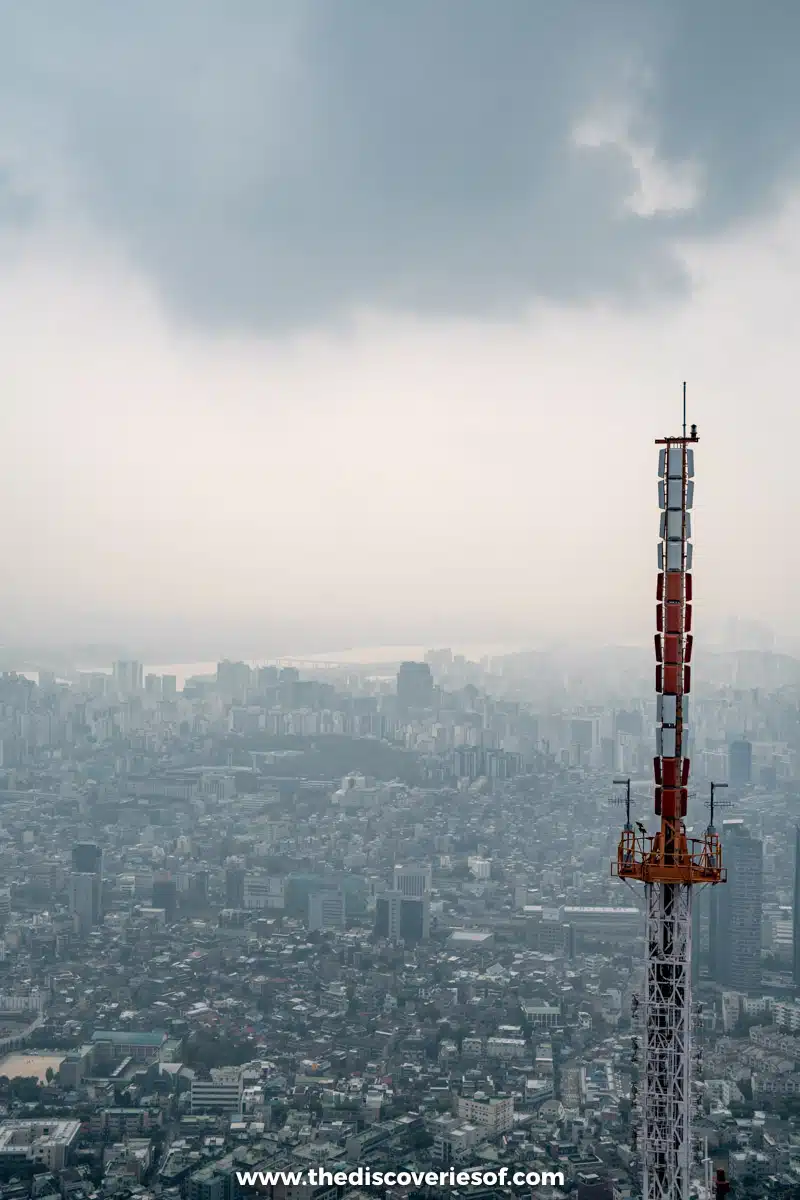
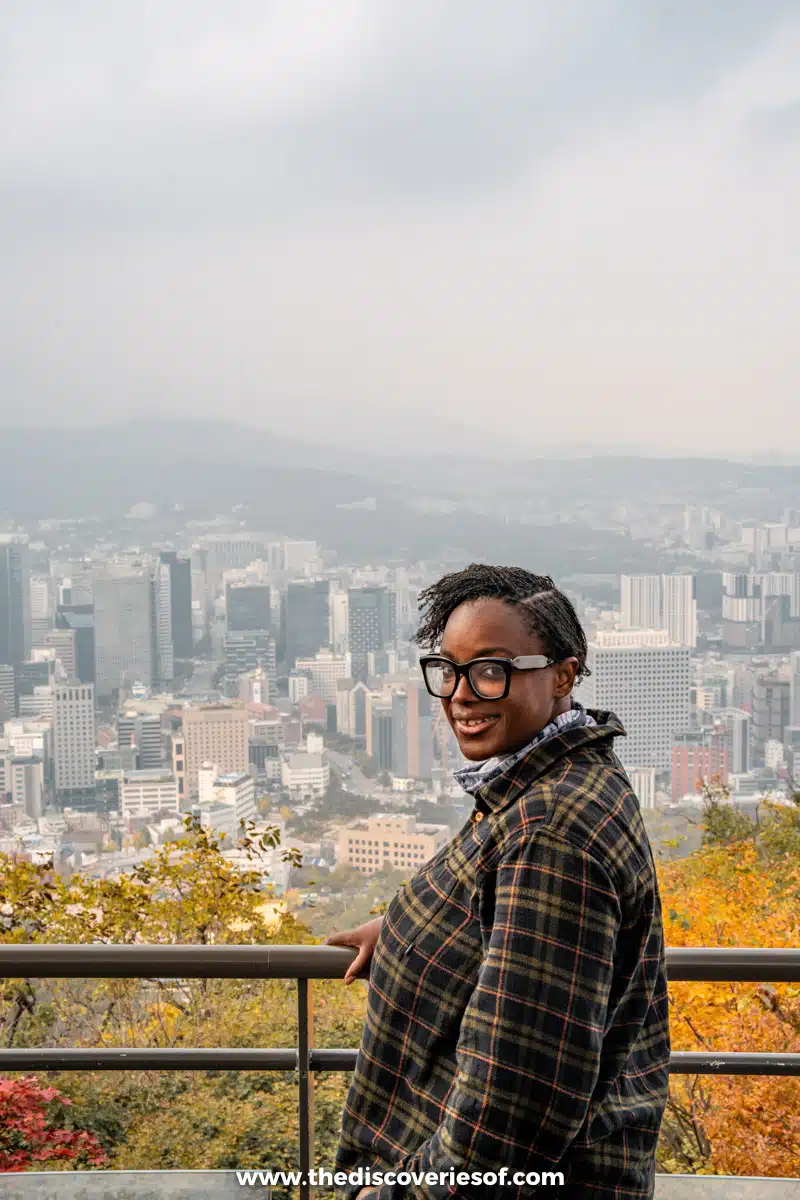
Now that you’ve seen many of the most historic sites in Seoul, it’s time to check it all out again from a bird’s eye view.
What’s the best way to see Seoul at night? From the top of N Seoul Tower, no doubt. Once you reach the top, the observation deck offers some of the most incredible views of the city.
You can hike up, which takes about 30 minutes, but I think taking the Namsan Cable Car is worth the £16 ($20) round trip, especially at night. The views of the city and N Seoul Tower itself are spectacular, so long as you’re diligent about elbowing your way to the window so you can see them.
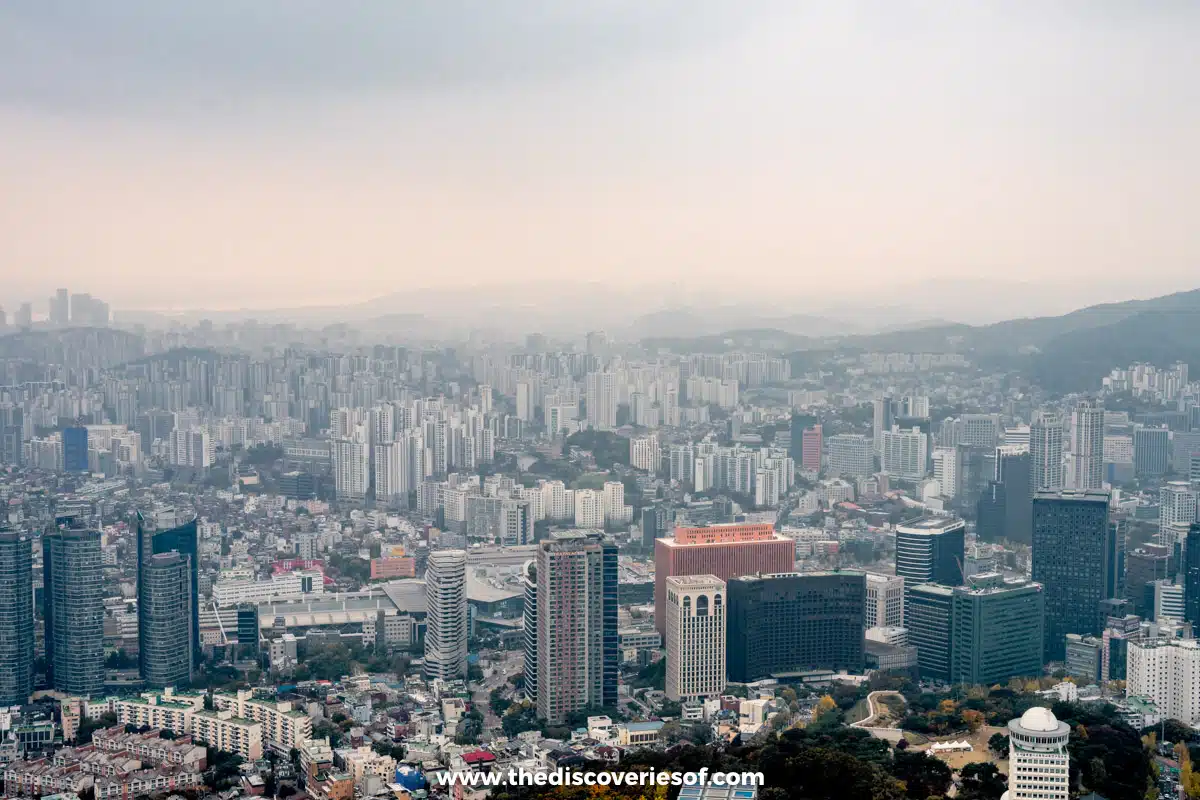
I was a bit disappointed that there weren’t much of any attractions at the top (BUSAN X in Busan has 3 levels of features to enjoy), but there is the N Grill restaurant, which I hear is actually pretty good.
If you need to use the bathroom, this is the opportunity to do it – as you’ll enjoy the same amazing views of the bright lights from the buildings and highways from your stall as you do on the observation deck.
Day 2: Shopping, Eating and Sightseeing
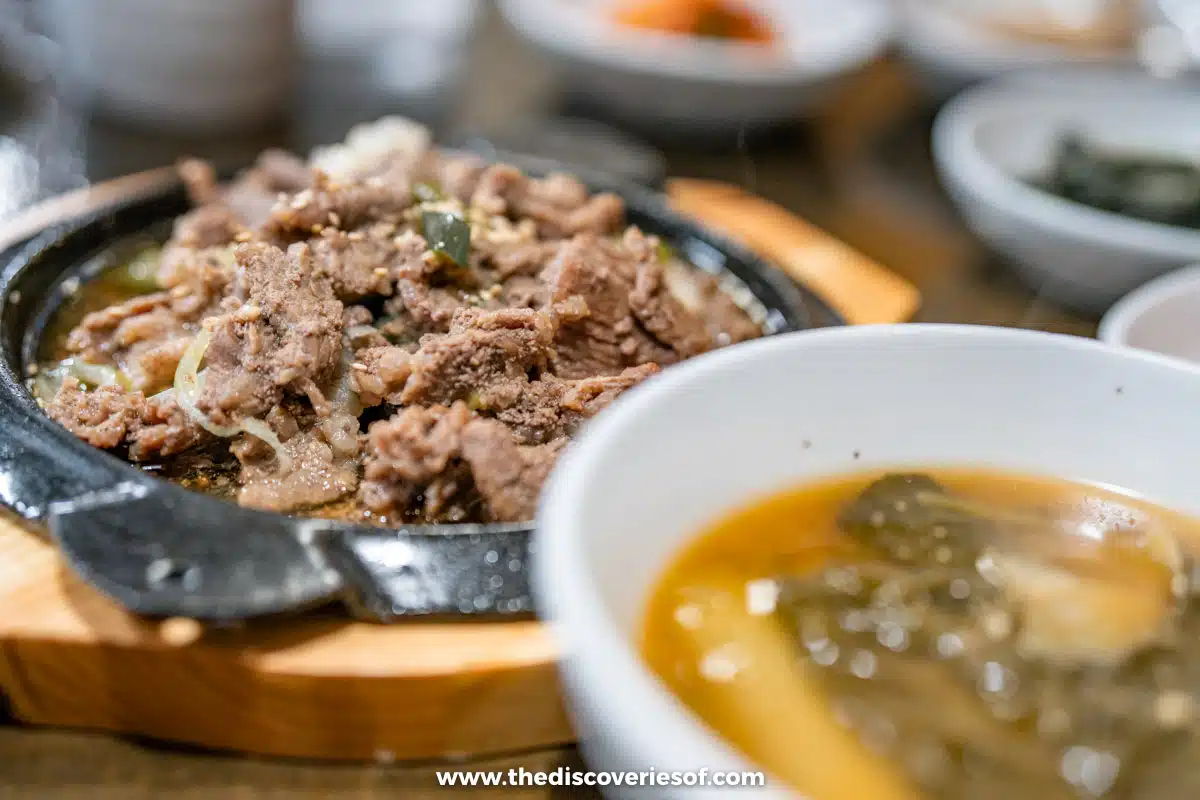
No matter how many days you have in Seoul, you need to fit in some shopping, plus the lively food markets, futuristic malls, and hanbok shops in Bukchon Hanok Village require at least a half day to explore.
So, on your second day in Seoul, bring your tote around town to see what surprises you can take home after your trip.
But since this is only a 3-day itinerary, I planned a full day of sightseeing that includes some of the city’s best outdoor spaces, a Joseon Dynasty palace, and a fantastic little cocktail bar I found on my last trip. Enjoy.
Walk Around the Gardens at Changdeokgung Palace
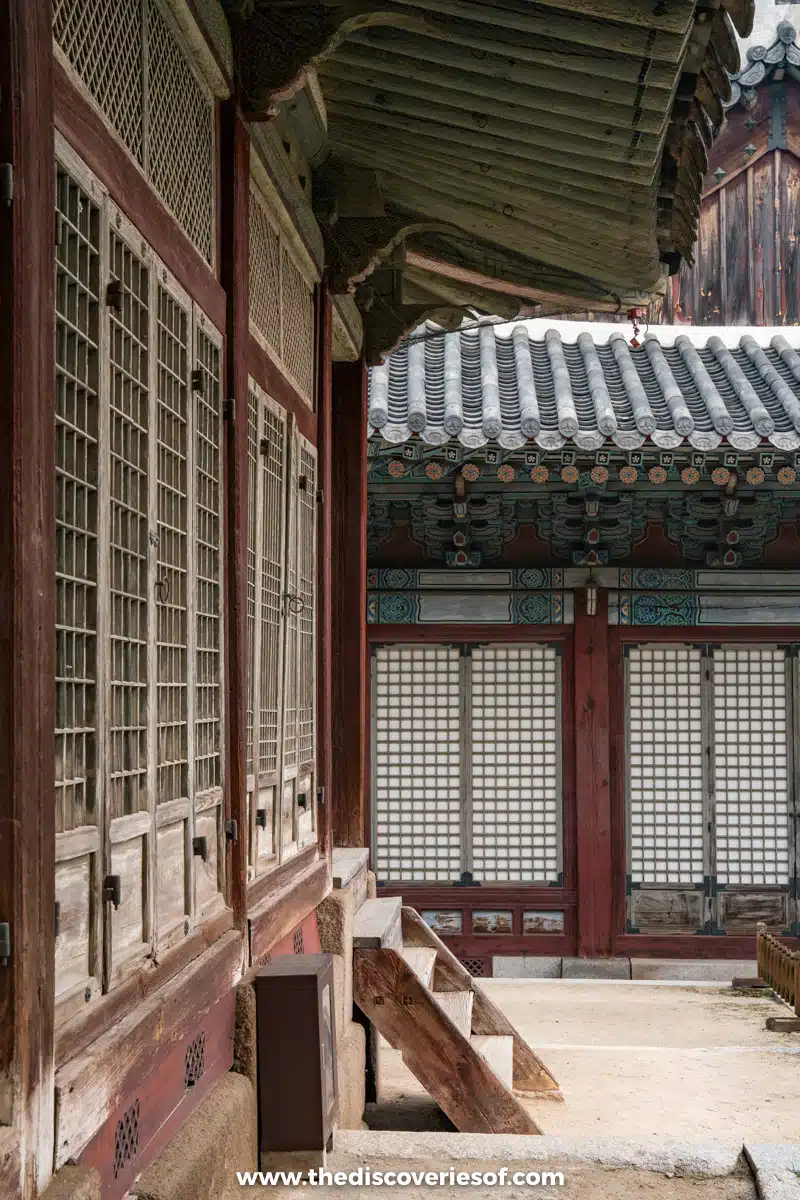
Now, out of the 2 Joseon Dynasty royal palaces I visited, Changdeokgung Palace was my favourite. Why? Even though it’s not quite as famous as Gyeongbokgung, there’s actually a lot more to see here.
For starters, the palace grounds are huge, at over 57 hectares. There are 13 buildings, and nearly ⅓ of them were not damaged when Japan occupied South Korea in the early to mid-20th century.
Another plus? The architecture is slightly different from other royal palaces and the garden was left in a more natural-looking state.
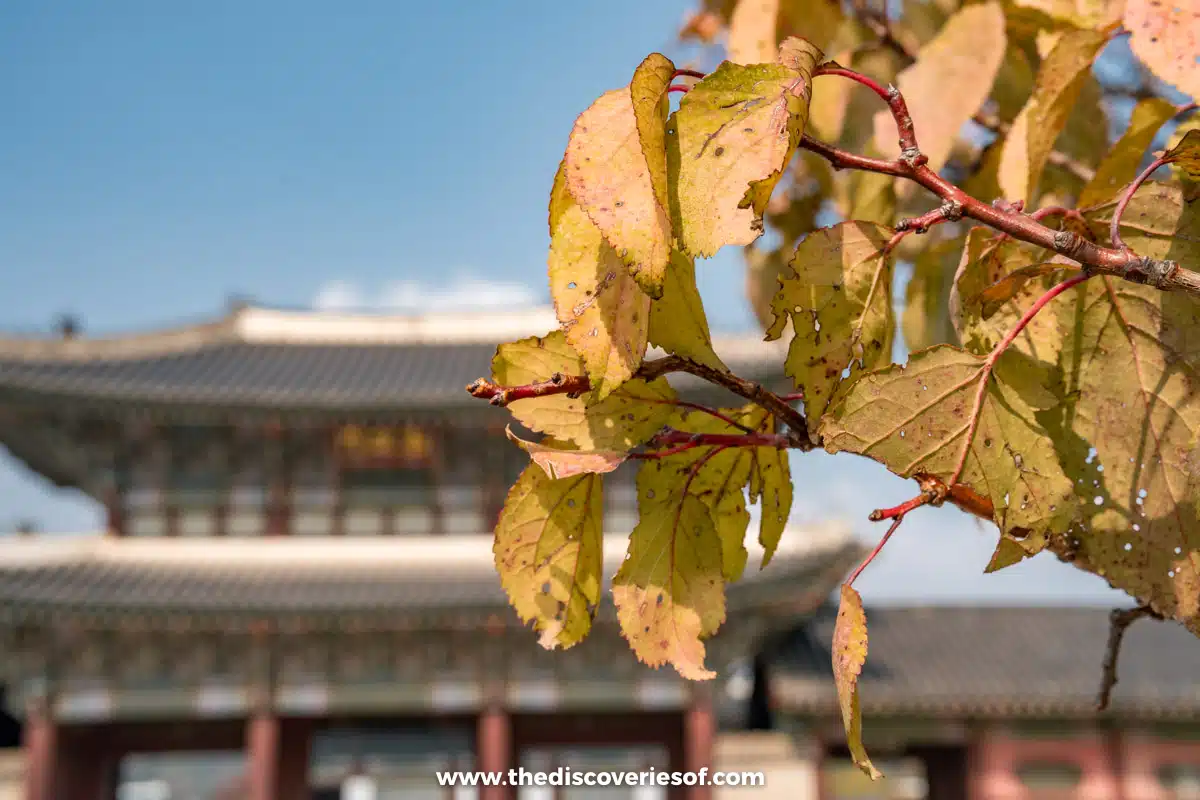
Pop into the palace’s buildings to try the AR experience where you can “attend” a historical 60th birthday party for the emperor’s mother as if you were one of the guests. It’s a really interesting experience and talks you through the event. I haven’t seen this done before, but it was a great way for building historical context for the ways in which the palace buildings would have been used in the past.
Palaces aside, the secret gardens are the star of the show. Featuring beautiful pavilions, a large pond, and several types of trees lining the pathways, you need to make some time to walk around them and take in the scenery.
My favourite part? The aesthetic changes dramatically by the season, especially when the cherry blossoms bloom in the spring and when snow covers the buildings and landscape in the winter.
Top Tip
The palace and gardens are closed on Mondays, so plan accordingly.
Stroll Through The Bukchon Hanok Village
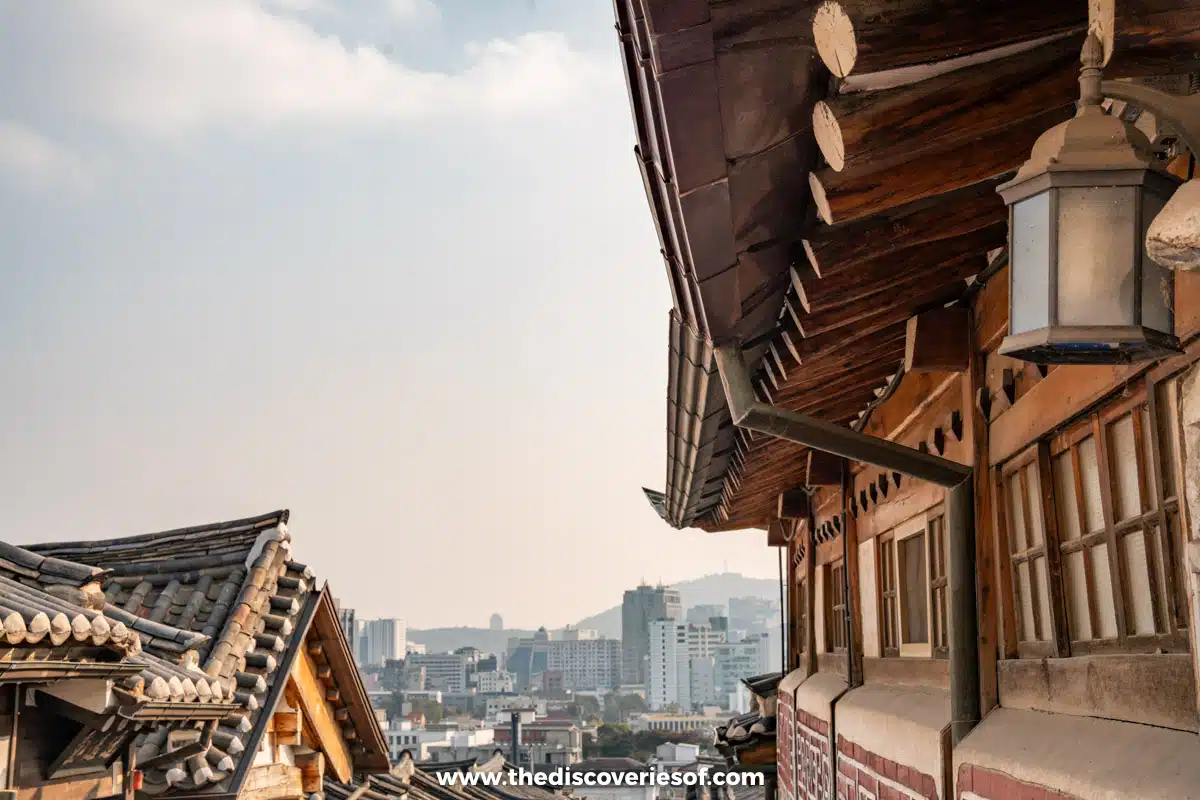
South Korea is famed for its stunning hanok villages – old villages with traditional hanok houses, one of the most famous of which is in Jeonju. If you can’t plan a day trip to Jeonju, don’t worry. There’s another historic Joseon-era village right here in Seoul and it’s every bit as scenic.
Bukchon Hanok Village is an enclave of about 900 houses along cobbled streets that date back as far as 600 years. This is one of the best places in South Korea to see the houses from the Joseon Dynasty era, with museums and stores inside some of the historic buildings.
Want the perfect photo? You can rent a hanbok from 한복남 경복궁점 Hanboknam Gyeongbokgung hanbok rental shop, and walk around the village looking for the best perspective. It’s an excellent way to take a time warp and get some fun photos for social media.
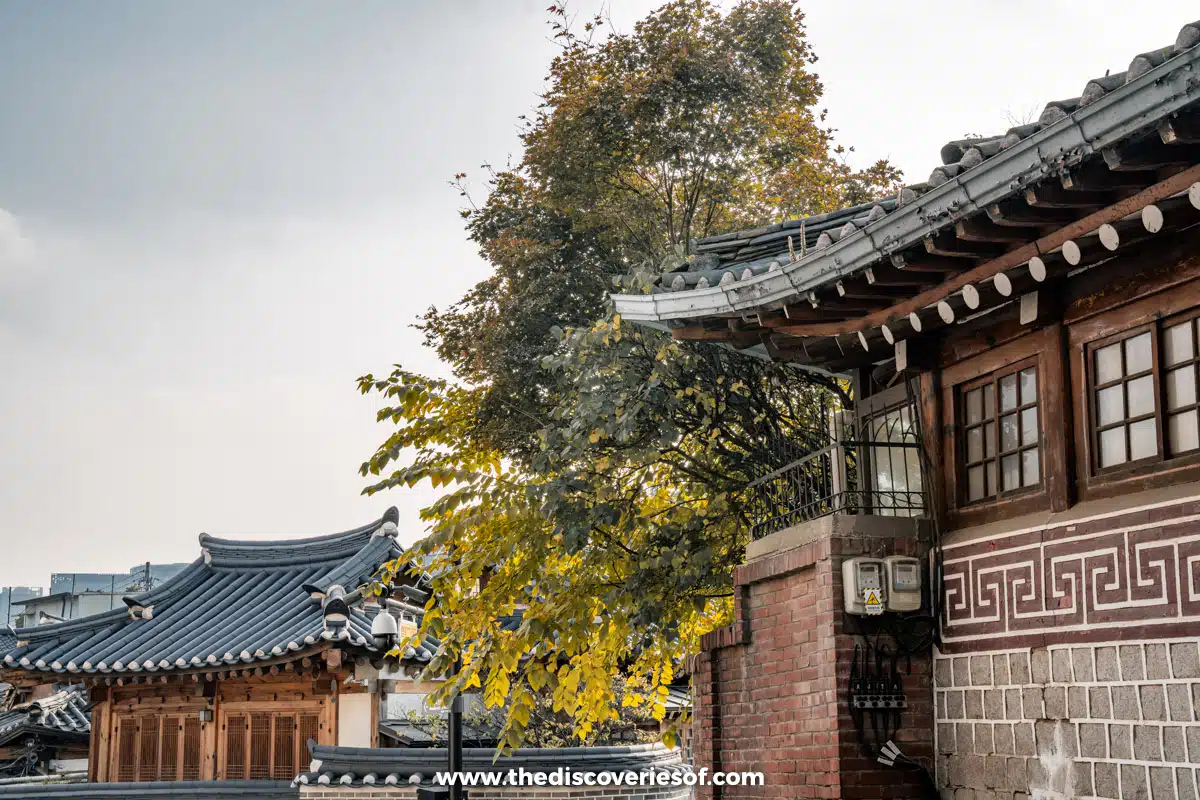
I won’t lie – outside of the early hours, it is packed with tourists, but that’s part of its charm I guess.
There are some excellent museums to see in the area too. Don’t miss the Bukchon Asian Cultural Art Museum, where you can see artefacts from the village dating far back into the Joseon-era.
Shopping in Samcheong-Dong
Every Seoul travel itinerary needs to feature a stroll through Samcheong-Dong.
If this neighbourhood already looks familiar, you’re not mistaken. You were right next to it at the Bukchon Hanok Village, and much of the same old-world charm remains in Samcheong-Dong.
Walk around the narrow alleys and steep staircases, and you’ll be treated to plenty of modern shops, murals, and restaurants (try the handmade dough soup at Samcheongdong Sujebi if you need a snack).
Check out the clothing boutiques, tea shops, and K-beauty stores like Beauty of Joseon in one of the most charming areas in Seoul.
Mellow Out at Han River Park
Han River is one of Korea’s most iconic bodies of water, stretching from Kangwŏn through Seoul to the Yellow Sea. Hangang Park is a wonderful place to enjoy peace and quiet by the famous river, in one of 12 different parks in the city.
I chose Yeouido Park as a stop for your trip because it’s on the way to The Hyundai Seoul and offers a great chance to people watch and get some exercise on the tree-line paths near the Han River. It’s a local spot that’s equally fun for tourists.
Top Tip
If you end up doing this later in the day, head to Seoul Bamdokkaebi Night Market for some excellent food, but it’s only open on Fridays and Saturdays from April to October.
Pop in to the Pop-Ups at The Hyundai Seoul
A department store as a must-see on your holiday in Seoul? Absolutely. And if you know anything about K-pop (I’m guessing you do), this shopping centre is going to be a really fun stop for you.
The K-culture pop-up features numerous exhibits from famous K-pop groups, some not as well-known ones, and even actors like Lee Dong-wook, who sold packages of souvenirs to fans in November. There’s also plenty of snacks you can try if all the sightseeing makes you work up an appetite.
There are lots of fun, international options, but you need to try Le Freak. It’s a “burger” joint, but it’s actually a fried chicken sandwich. Korean fried chicken is incredible, and this fast food restaurant deviates a bit from tradition but nails it with a Nashville Hot and Garlic Soy option.
But even if the pop-up market isn’t your thing, the department store itself is really cool. It’s a beautiful space inside filled with striking modern architecture and lots of indoor plants for a welcoming feel.
Street Food at Gwangjang Market
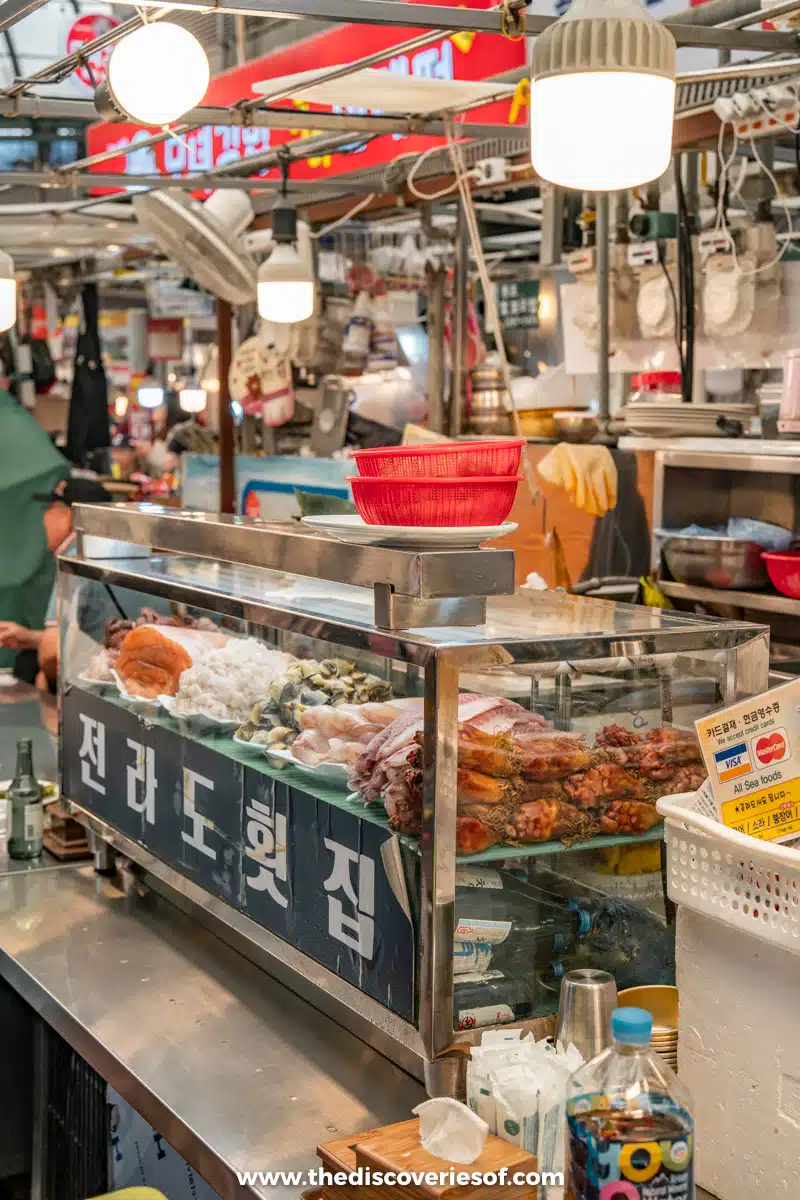
I hope you shared the sandwich at The Hyundai because you’ll need an appetite when you visit Gwangjang Market.
The 118-year-old market is one of Korea’s most famous places to eat, and you can honestly find just about any South Korean cuisine imaginable at this local haunt.
So, how do you narrow in and really find the best thing to eat? Look no further than Sunhui-ne Bindaetteok, the crazy popular mung bean pancake shop that makes them better than you’ll find… anywhere.
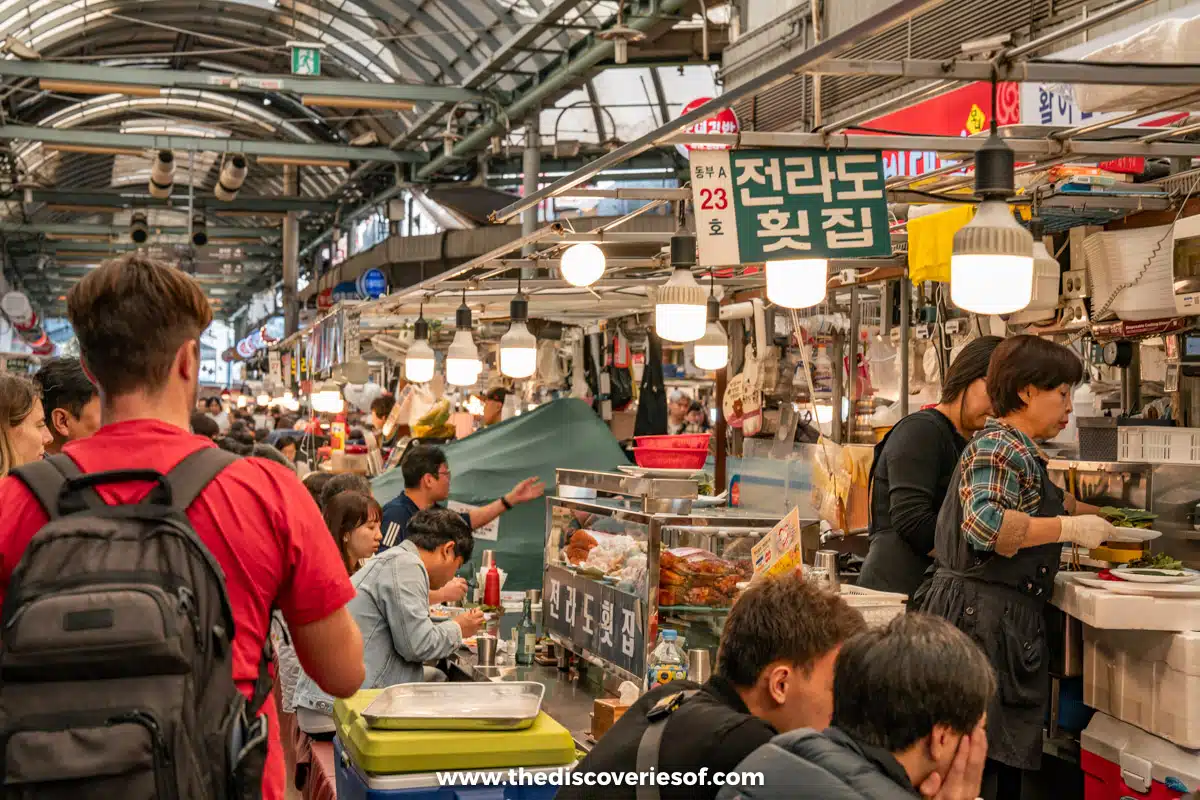
This isn’t your Western breakfast pancake. It’s so much more. The crispy exterior is full of flavour and ingredients, including succulent pork, spicy kimchi, and assorted veggies to give you some sustenance for the evening.
If you want more than a quick snack, find a stall selling knife-cut noodles (Gohyang Kalguksu) and enjoy them with a savoury broth that should hold you over until your next meal.
Happy Hour at Ace Four Club
Ready to party? Seoul is a lively city, where the party always seems to be going on, but if you want something a bit more sophisticated, you want to head to Ace Four Club in the trendy Euljiro-dong neighbourhood.
For starters, the vibe is just incredible. It’s a brilliant fin-de-siecle cocktail bar in a 60-year-old teahouse with beautiful views from the hardwood tables in the dimly lit space.
But it’s not just surface-level stuff here. No, the cocktails are exquisite. The menu leans simple and classic (which I love) without too many surprises. But the negroni, old-fashioned, and high ball are all made with expert precision and the finest products.
But alas, I could enjoy a G&T made by the most jaded bartender and still enjoy the timeless decor and genuine energy at this hidden gem in Seoul.
Go For a Night Out in Nogari Alley
Nogari Alley is a street open-air drinking spot with cheap drinks and a lively atmosphere. Perfect place to kick start the last night of your Seoul 3-day itinerary, isn’t it?
Euljiro is one of the coolest neighbourhoods in Seoul, and Nogari Alley is its liveliest street. Think make-shift dining tables pulled out onto the sidewalks and streets with a young, local crowd chowing down on fried chicken, burgers, and beers.
Have a hankering for Western food? The Ranch Brewing Euljiro sells square pizzas and craft beers in a lively setting popular with locals. It’s a lot of fun.
Day 3: Hiking, Visiting the DMZ, and Spa Time
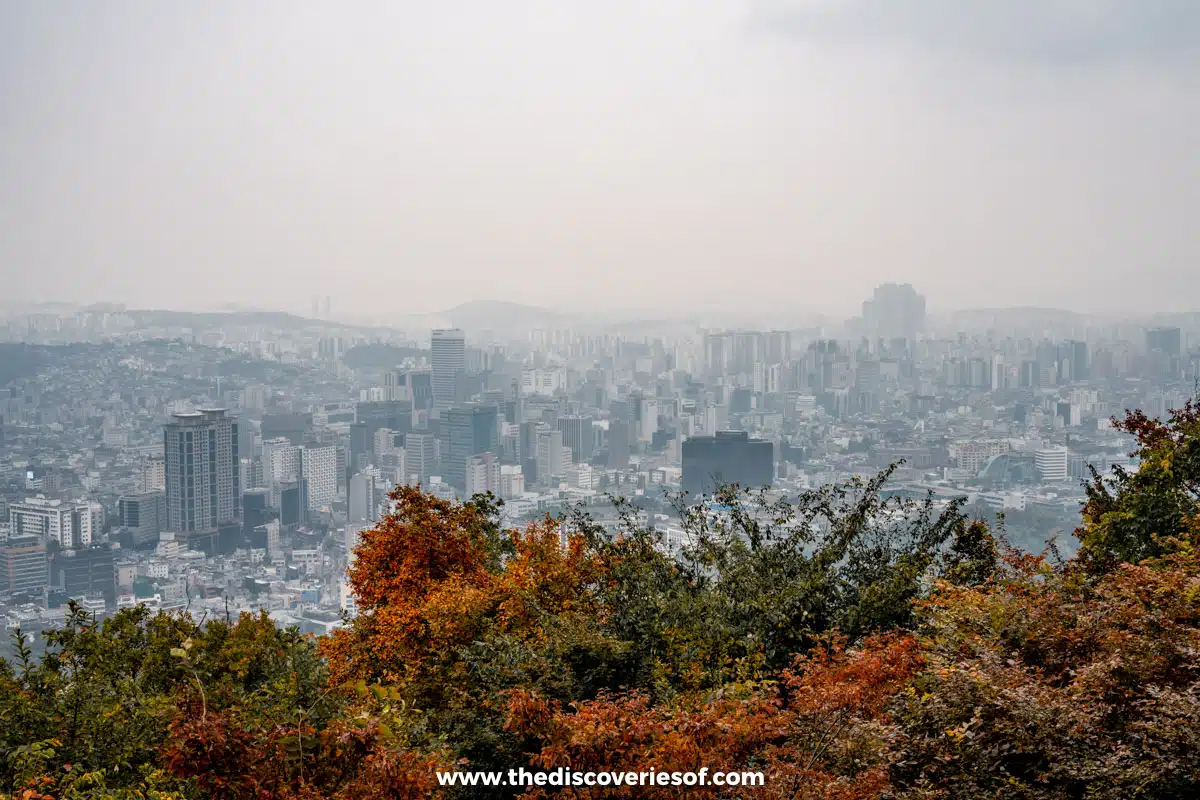
It’s the final day of your Seoul trip itinerary. You’ll cover a lot of ground on foot and drive to the DMZ, but you’ll finish the day with a luxurious spa treatment in one of Seoul’s best spots.
Climb Inwangsan
You’re going to have to wake up, rally, and head out to the hiking trails early on Day 3. But trust me, the views from the top of Inwangsan will wipe away any brain fog from the bright lights and stiff drinks the night before.
Climb up this short but challenging hike in Jongno-gu, which has over 550 feet of elevation gain, making you question the literal translation of Inwangsan to “compassionate/benevolent king.”
I promise, the views of the sun rising over the city will put a smile on your face once you’ve caught your breath.
Top Tip
You can’t hike this trail on Mondays (it’s closed), so you’ll need to move this to another time if Monday is the final day of your trip.
Walk Through Seodaemun Prison
The 20th-century Seodaemun Prison was once known as Keijo Prison under Japanese occupation.
During the years of colonial rule, the jail quickly went from 500 to nearly 3,000 inmates, with harsh conditions that included torture and murder. Sad, but true. Korean independence activists spent decades in prison until it was turned over to South Korea after World War II.
Now, you can tour the property and learn about the inmates’ stories and struggles in a very moving memorial, which I think everyone should do on their trip to South Korea.
See North Korea at the DMZ or Visit Aegibong Peace Ecopark/i
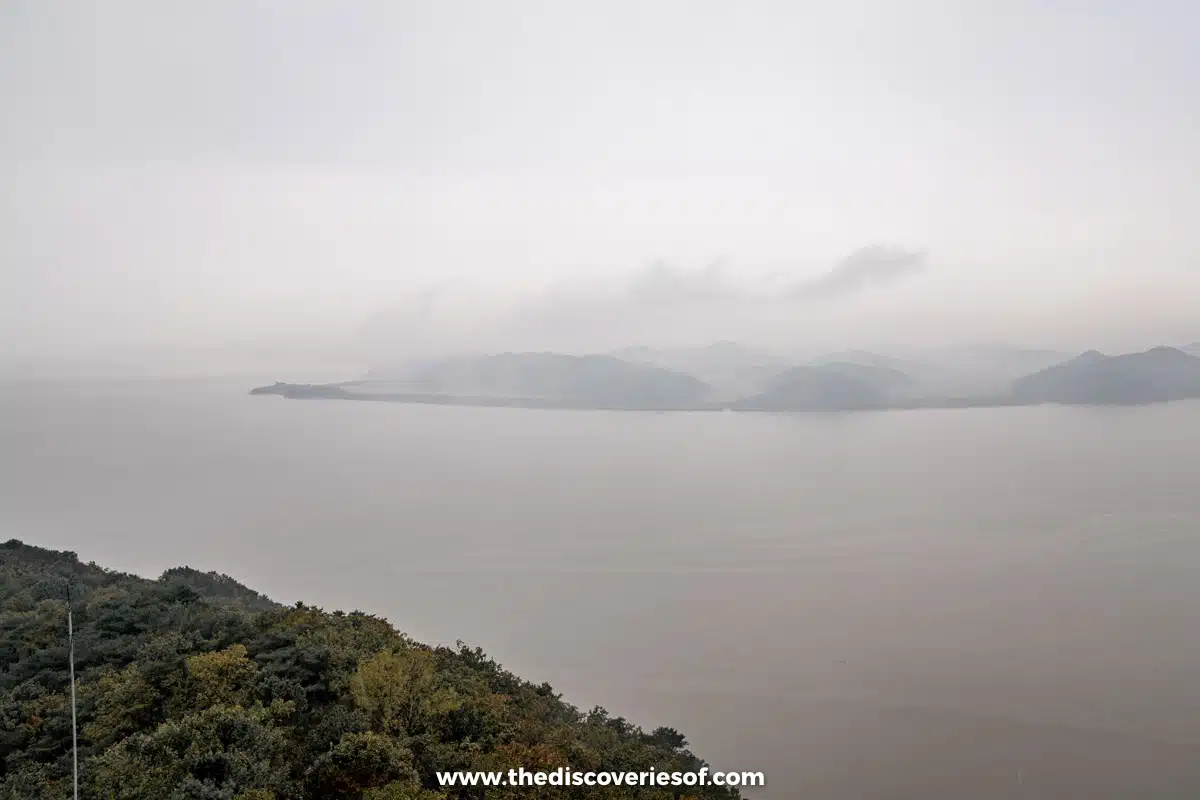
You won’t have time for a full tour if you want to fit in other activities, so you’ll miss a few highlights of the Korean DMZ. The stretch of demarcation on the 38th parallel separating North and South Korea is a popular area to visit to learn more about the history of the Korean War and it also offers a glimpse into North Korea.
Luckily, Aegibong Peace Ecopark is an excellent alternative to the standard DMZ tour, with loads of information about the history of the war and a peek into one of North Korea’s most important cities: Pyongyang (granted from far away).
Top Tip
The drive takes 1.5 hours each way, and you’ll want to avoid peak commute times, which you can bypass by leaving after 10 am and returning before the evening rush hour.
Korean BBQ and Nightlife in Myeongdong
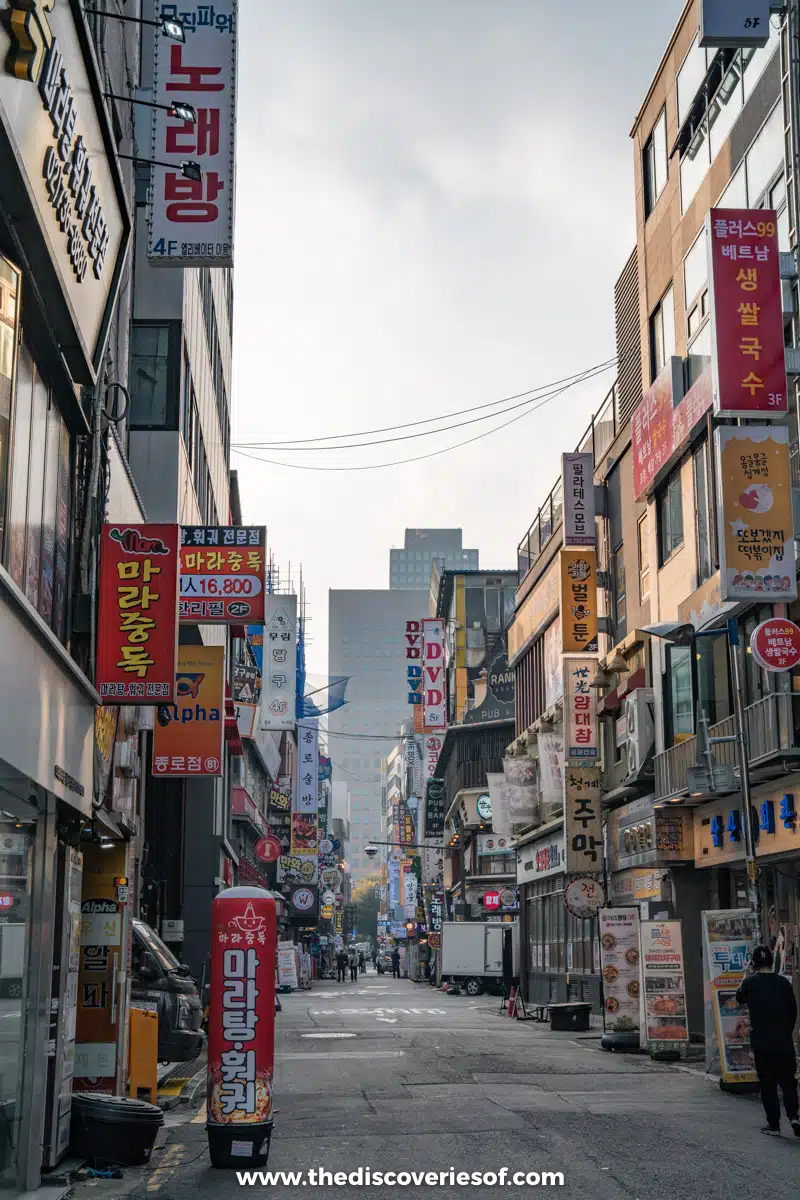
Keep the party going in Myeongdong, where the busy shopping district transforms into a nightlife paradise, with neon lights covering everything from the storefronts to the trees lining the bustling avenues.
Before you go out for a nightcap, be sure to visit one of the city’s favourite BBQ joints, Chung Ki Wa. Order a plate of the signature spare ribs. The secret sauce is insane, and for about £18 ($22), you’ll have enough food to handle cocktail hour.
Myeongdong is a huge neighbourhood with tons to see, but you have to check out Myeongdong Sukui.
You’ll need to track down the speakeasy (it’s on the 4th floor of this building) and kind of trust your instincts to locate the elevator. But trust me, it’s worth the effort to try one of the perfectly-made cocktails.
Top Tip
Call ahead to reserve a spot, the secret is out
Jijimbang at Spa Lei
South Korea has a rich history of spas (Jijimbang), which date back to royalty in the Joseon Dynasty era, taking advantage of the natural hot springs throughout the country.
Spa culture in Seoul is a 24/7 affair, with many of the best houses staying open around the clock. Make like a true South Korean and go for a cleansing Jijimbang at the end of your night out.
My favourite, Spa Lei, is one such place, making it the best activity to cap off your time in Seoul. Entrance to the spa is around £25 – you can pay that by card, but you need to have cash to pay for massages / scrubs within the spa itself. I opted for the 1 hour scrub and massage combo and it cost around £70.
This isn’t necessarily a relaxing experience, but you will come out feeling brand new. Guaranteed. Think of an ultra-modern Art Nouveau setting using traditional Korean products.
Top Tip
If you are going to have a scrub, definitely make sure you spend some time moving between the warm baths first (min 30 mins) as it helps soften your skin. I’ve had a lot of scrubs before but this one was *vigorous* so you’ll definitely benefit from having prepped your skin a bit beforehand.
Have More Time? Add These To Your Itinerary
If you have time to stretch your trip out a few more days, I’d highly recommend adding a day trip to another one of South Korea’s beautiful cities.
There are many different locations to choose from, and the KTX high-speed train connects you to the top of many of the destinations in the country in under 3 hours. Here’s a look at a couple of the best.
Busan
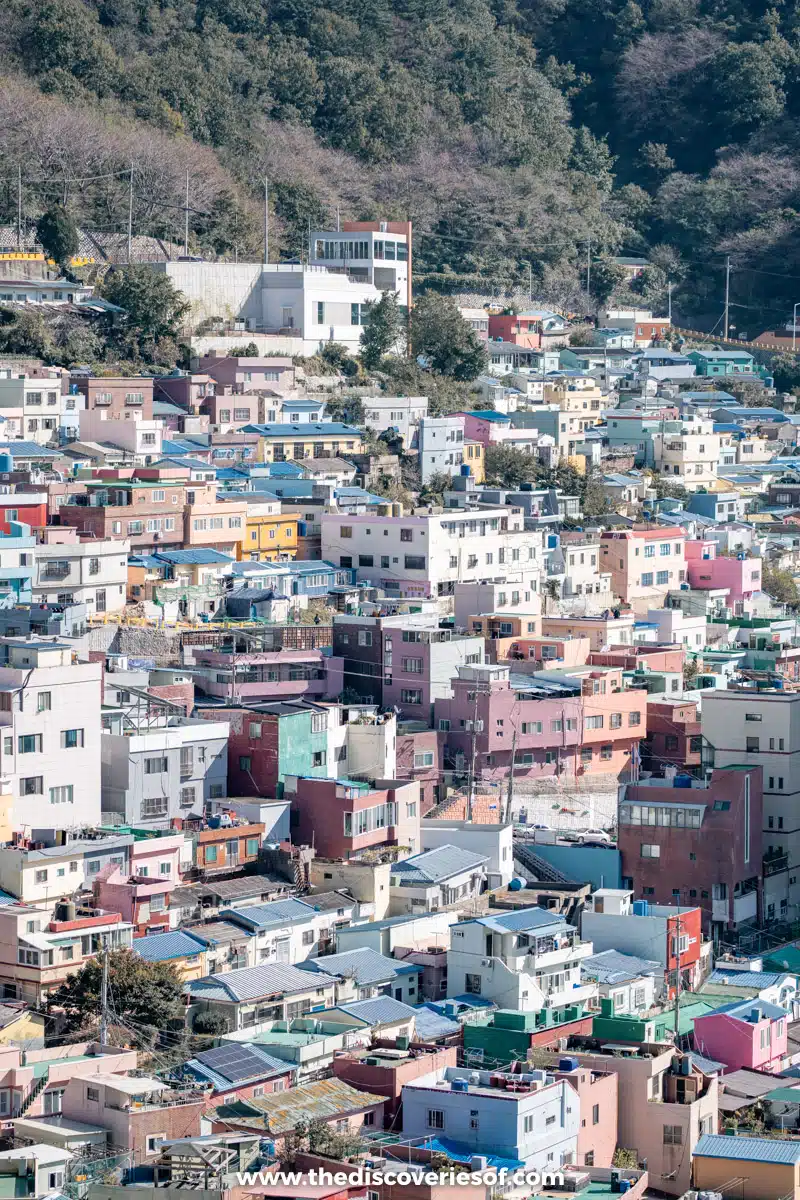
The KTX will bring you to Busan in around 3 hours, and the first thing you’ll notice is how beautiful this city is.
Located on the southeastern point of the peninsula, you can catch outstanding ocean views from the top of the tallest skyscraper, BUSAN X the SKY, or from a scenic cable car on Busan Air Cruise.
There is some excellent food here, too. If you’re at the popular Haeundae Beach, go to Korean Steak Grill 전설의 우대갈비 해운대직영점, and enjoy a plate of Korean BBQ that’s expertly cooked and sliced at your table.
Jeonju
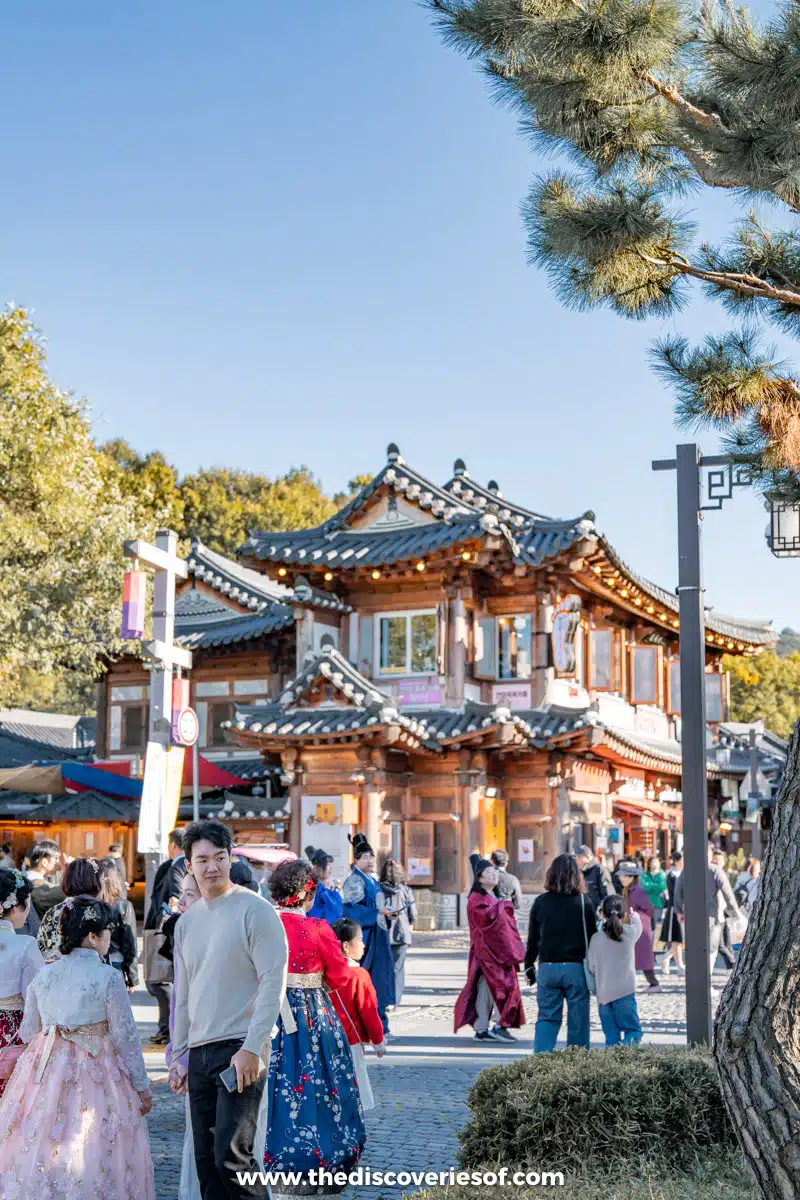
If you’re looking to slow down a little and take in the scenery, food, and culture of one of South Korea’s most charming towns, jump on the KTX from Yongsan Station and arrive in Jeonju in a few hours for under £30 ($38).
You’ll find that Jeonju Hanok Village is the most charming historical Korean village in the country, with somewhere between 700-800 Joseon Dynasty-era-inspired houses (who’s counting?) lining the idyllic cobbled streets.
Rent a hanbok dress and amble about the village, stopping at Gyeonggijeon Shrine to learn more about Joseon Dynasty’s first ruler, King Tae-jo, who was born in Jeonju.
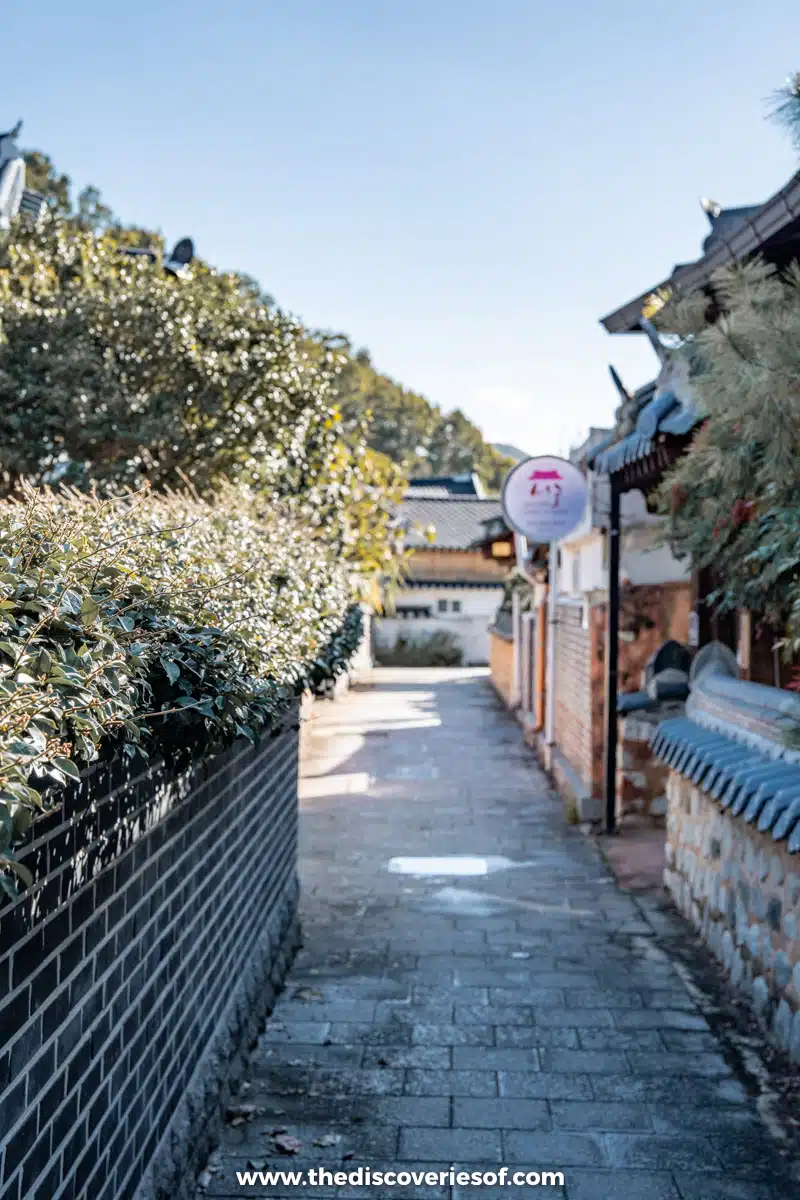
But do save time to explore more of Jeonju, where the famous bibimbap dish was invented. It’s a culinary delight and an official UNESCO City of Gastronomy with hidden gems around every corner like the excellent 경성금돼지 – Pork Grill Restaurant. Try the cold noodles with sizzling cuts of pork and heaping spoonfuls of kimchi for a perfectly balanced treat.
Handy Tips for Planning Your Seoul Trip
Top Tips
- Getting around Seoul via bus and subway is really easy – simply buy and charge a transport card and use it to tap in and out of the relevant locations.
- Use Naver or Kakao – Google Maps doesn’t really work in South Korea.
- While it’s possible to fit in a trip to the DMZ, it may come at the expense of a couple of other locations. Prioritise what you want to see the most and visit those locations over your first 2 days in the city.
- While South Korea is mostly card-friendly, there are a few instances (like in the spa) where you need to pay in cash, so have some Korean Won with you at all times.
What to Pack
- Comfy sneakers, you’ll be on your feet a lot during your 3 days in Seoul.
- Bring a universal travel adapter to use with the plugs, which include both Type C and Type F.
- If you’re travelling in the winter, you’ll want a warm jacket, hat, and gloves.
- Wear loose-fitting, lightweight tops that cover your shoulders and chest in the summer, as South Korean women dress more conservatively.
Quick Info for Your 3 Days in Seoul
- Time Zone: Korean Time Zone (GMT+9)
- Currency: South Korean won
- Plugs: Type C, Type F
- Nearest Airport: Incheon International Airport (ICN)
- 5 Must-See Spots: N Seoul Tower, Gwangjang Market, Changdeokgung Palace, Bukchon Hanok Village, Cheonggyecheon Stream.
- Top Tip: Ditch your Google Maps and use Naver or Kakao to navigate the sprawling city.
Getting Around
Seoul has excellent public transportation, which you can rely on to get just about anywhere in this itinerary.
The train and bus system is easy to navigate. Just charge up your card as you go, and you can dip in and out of each ride.
Read All Seoul Guides

Seoul Itinerary – Map
Read More South Korea Guides
Save + Share on Pinterest
